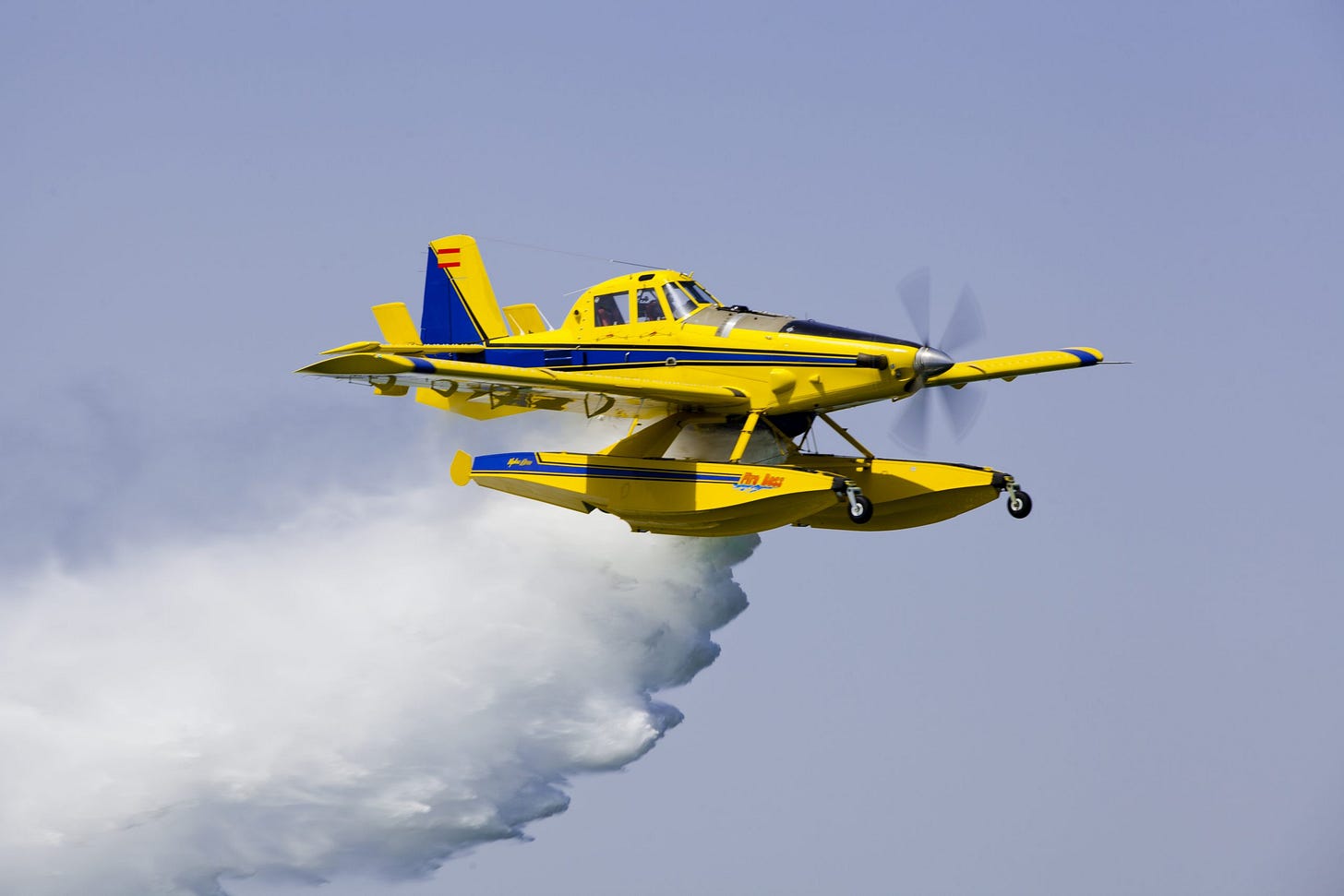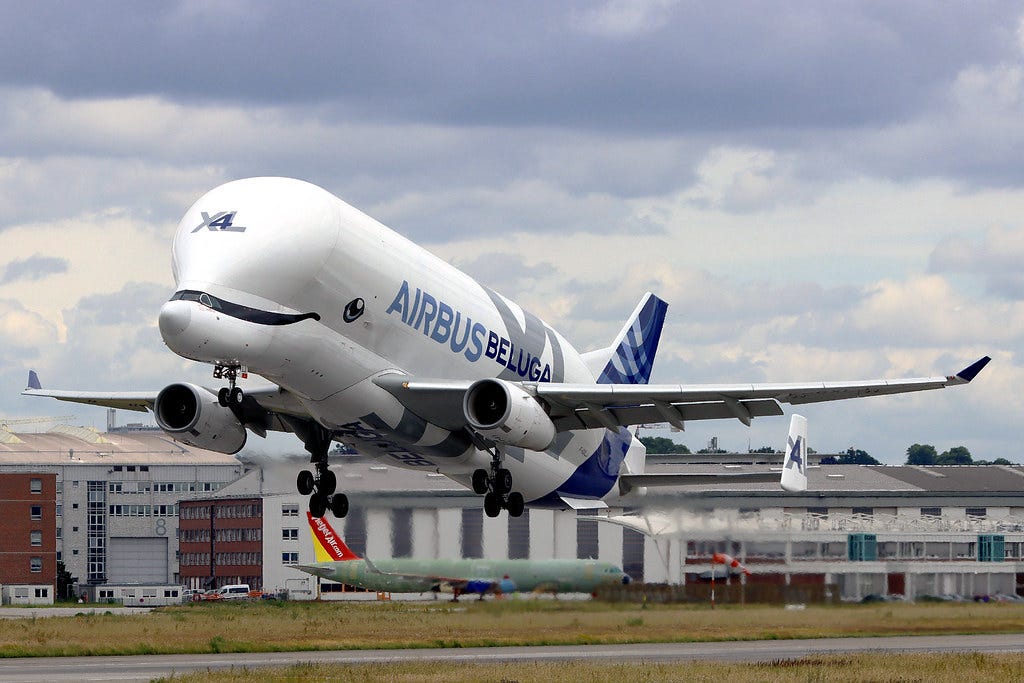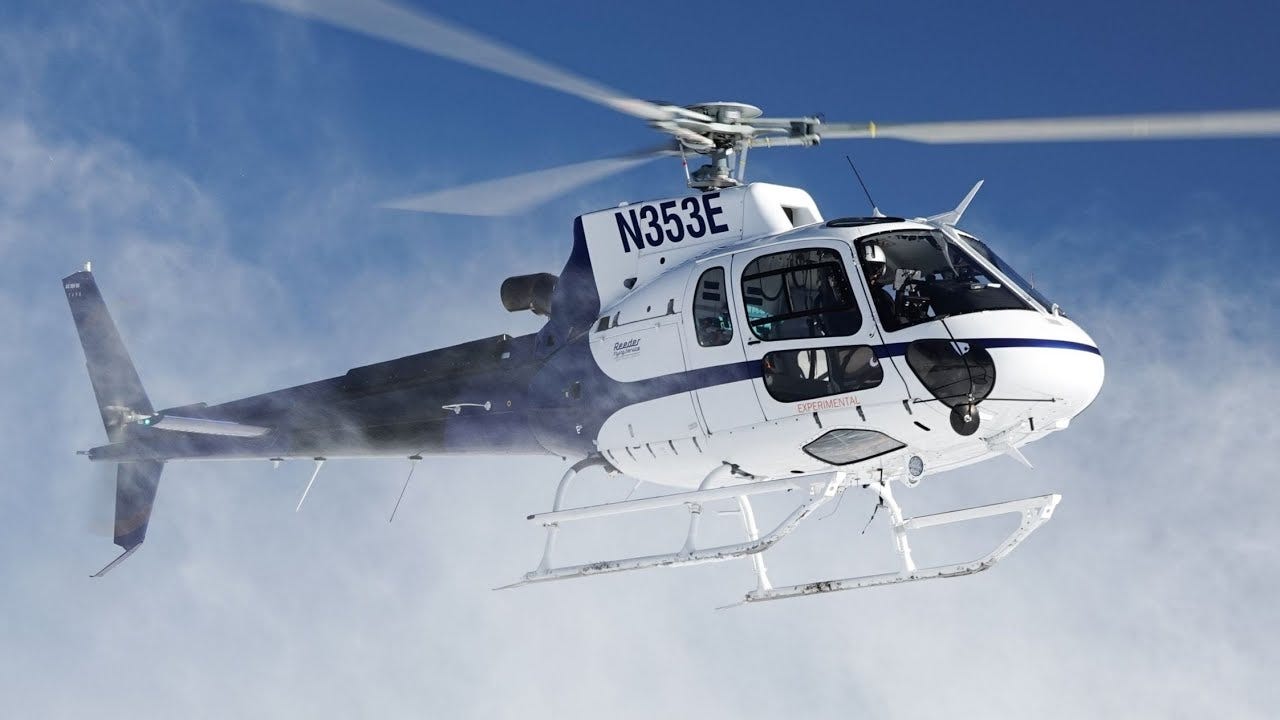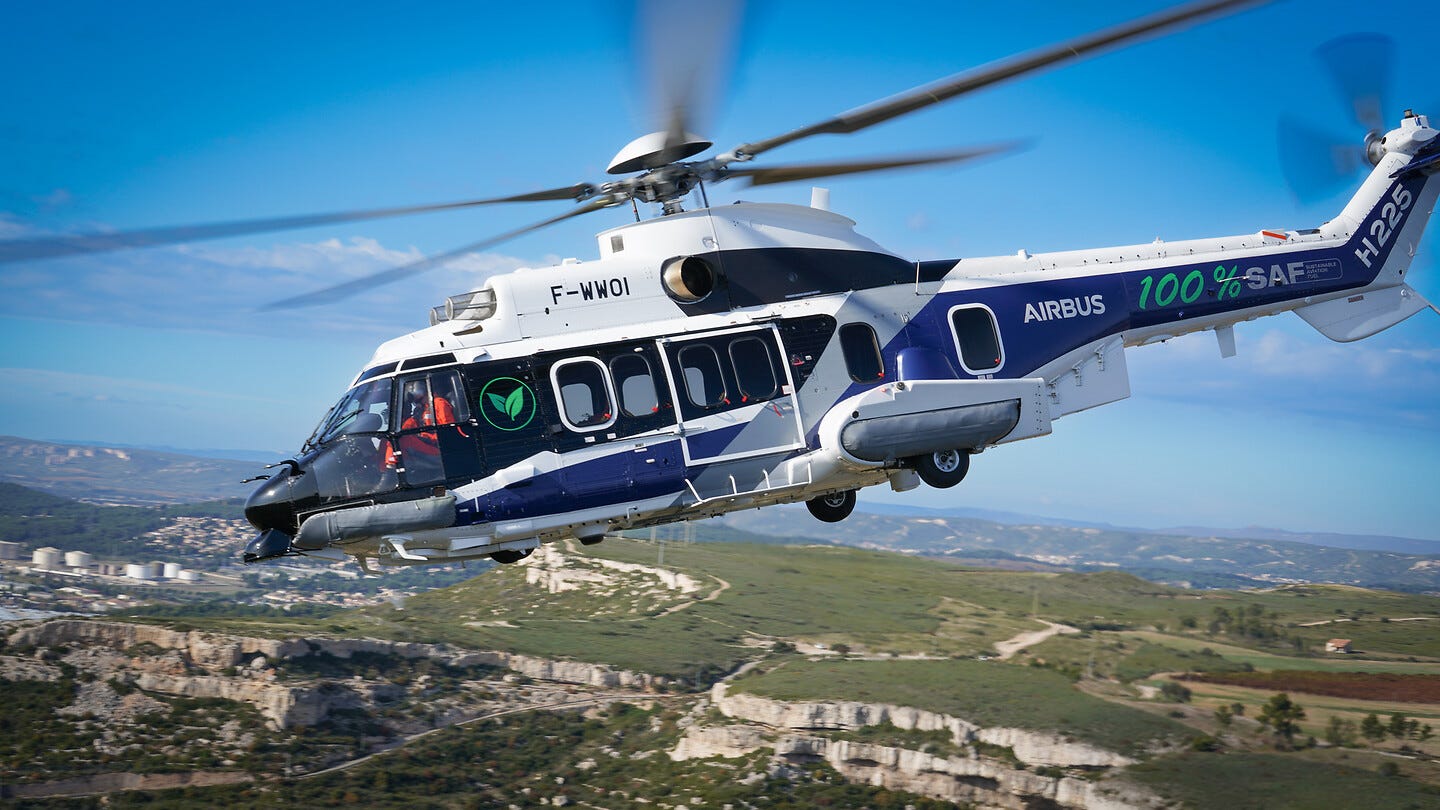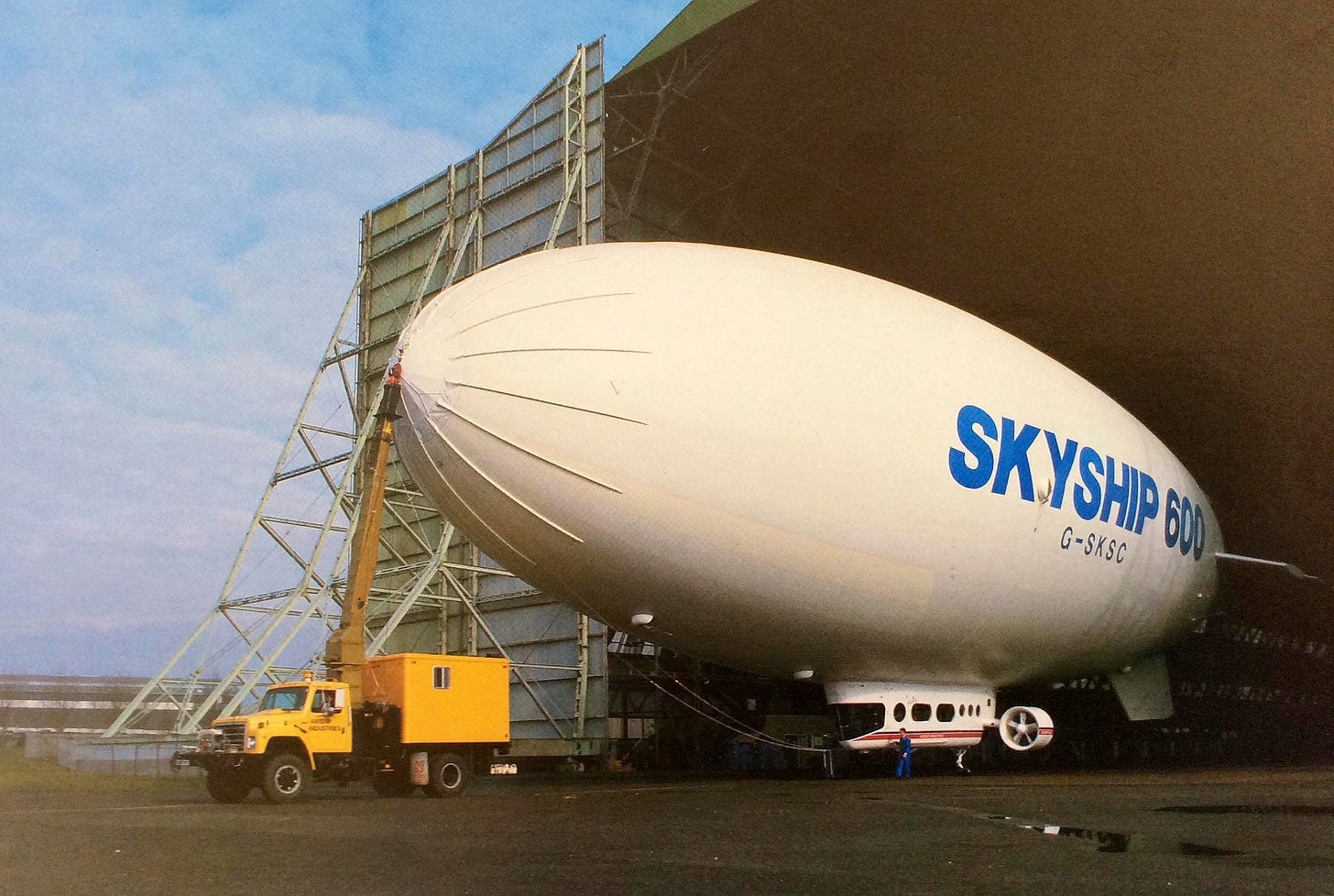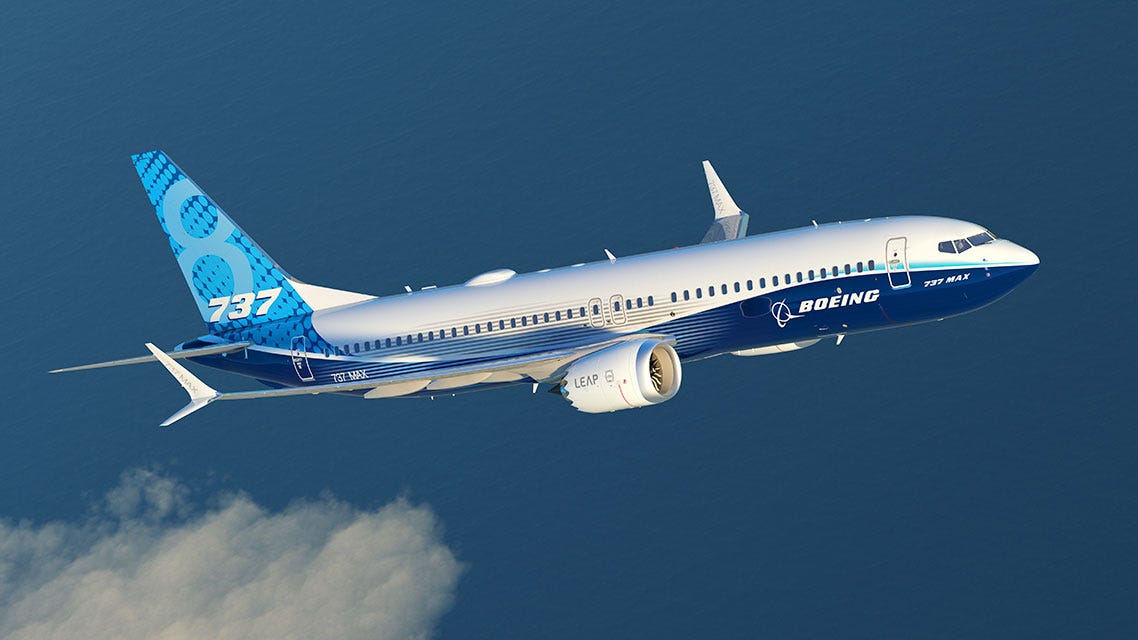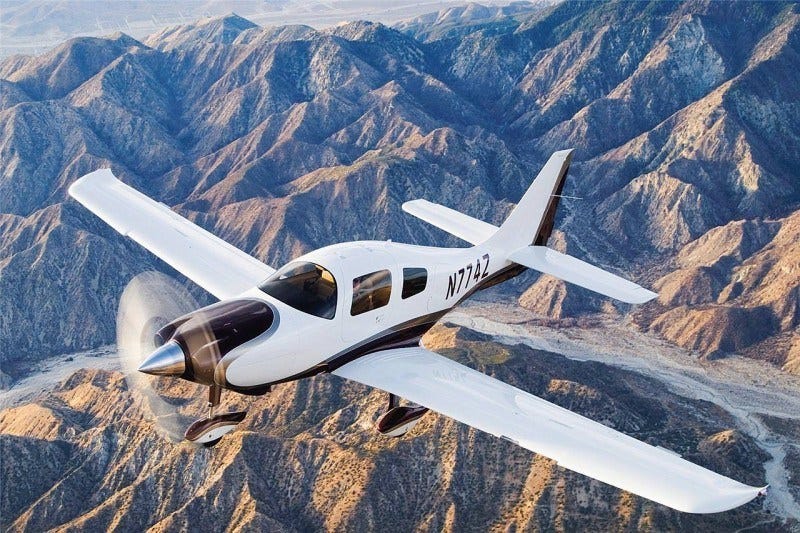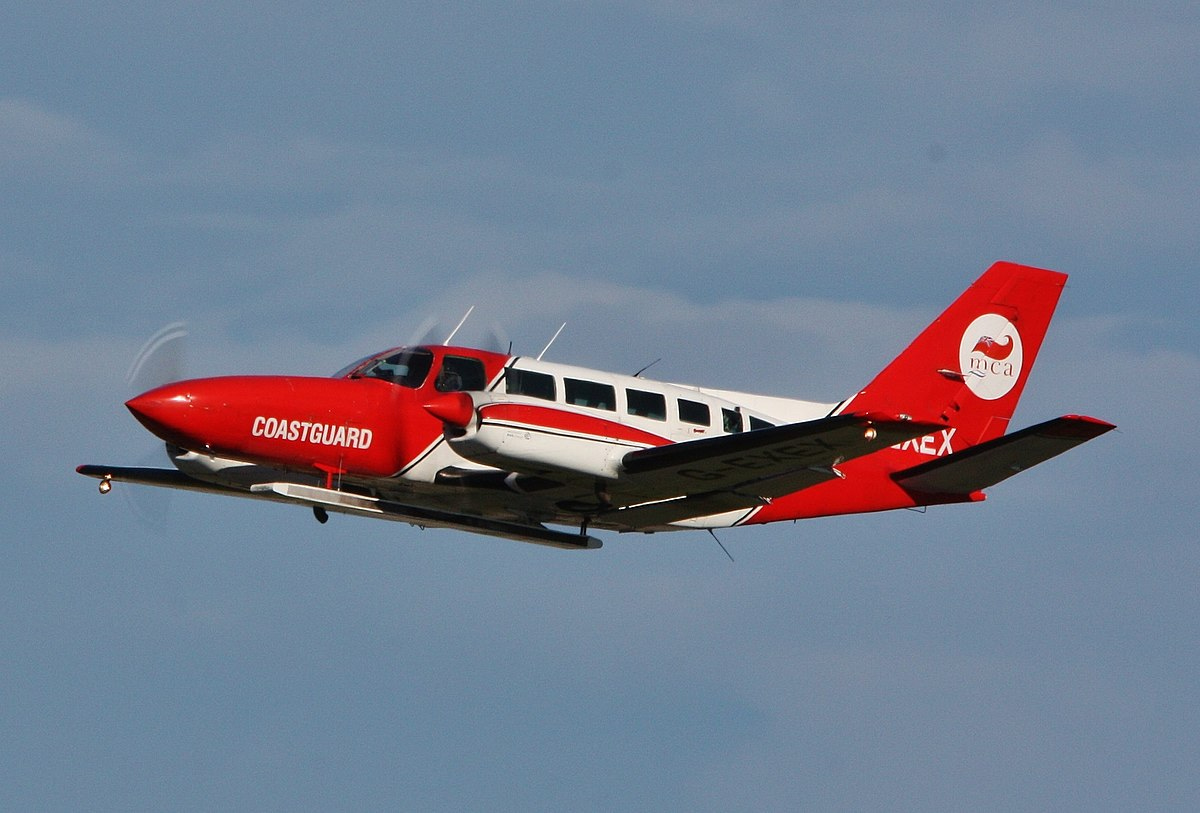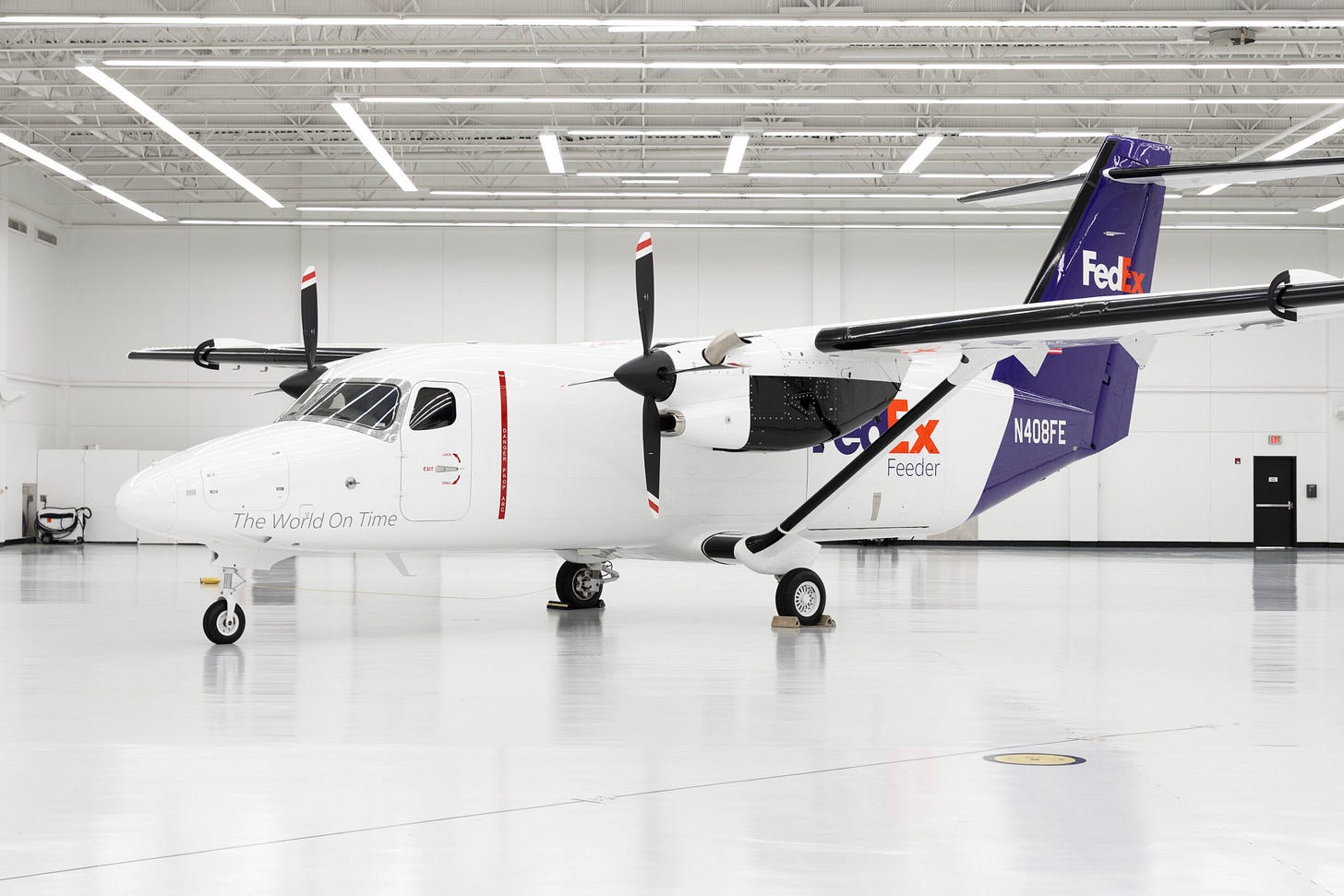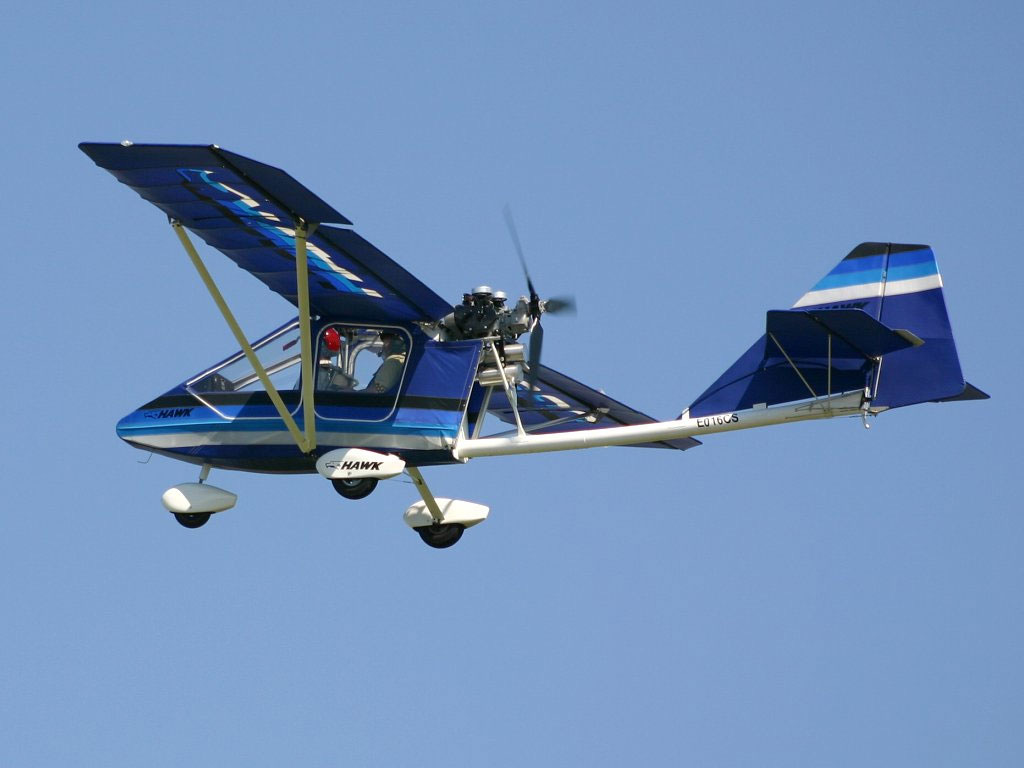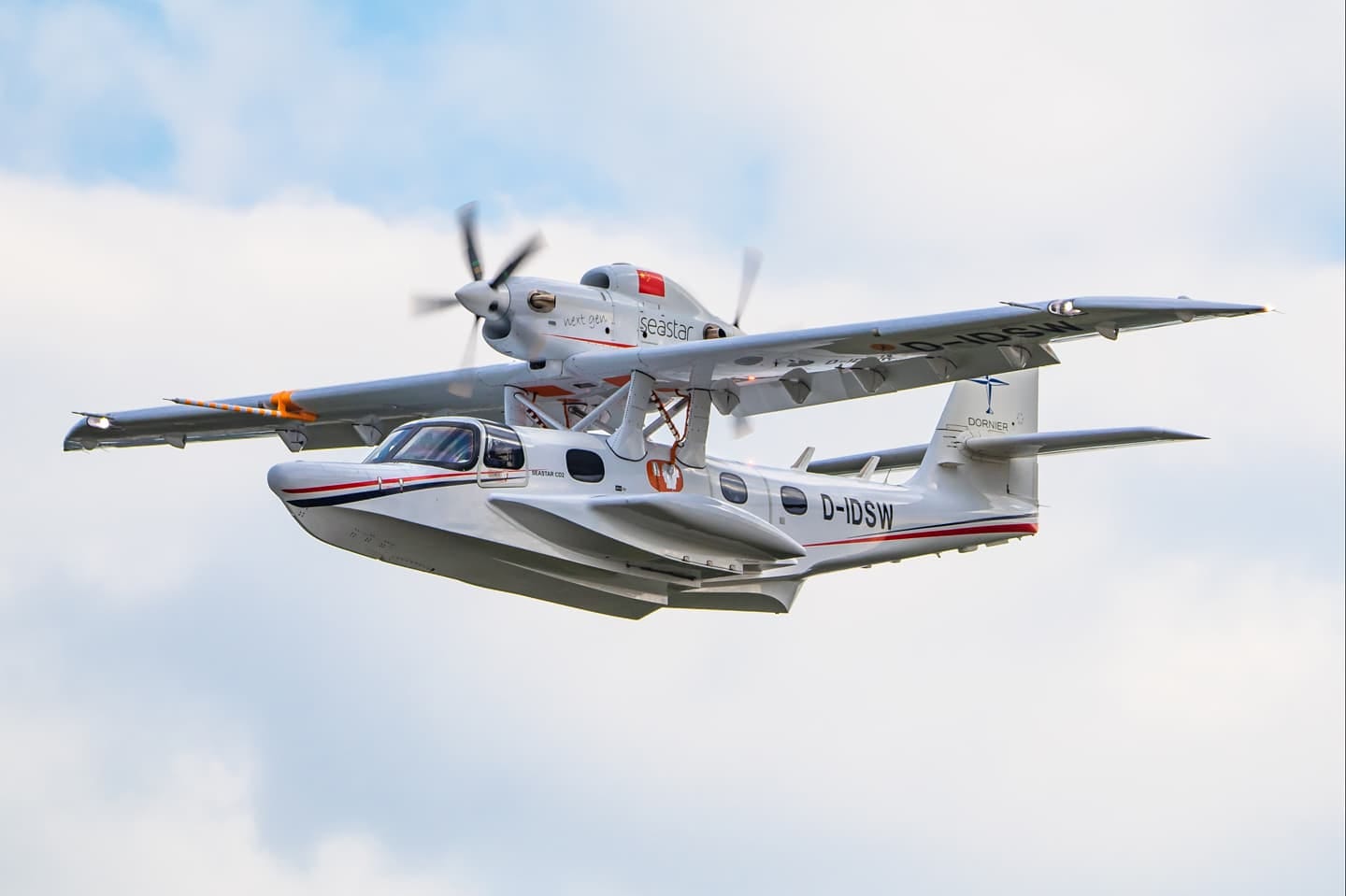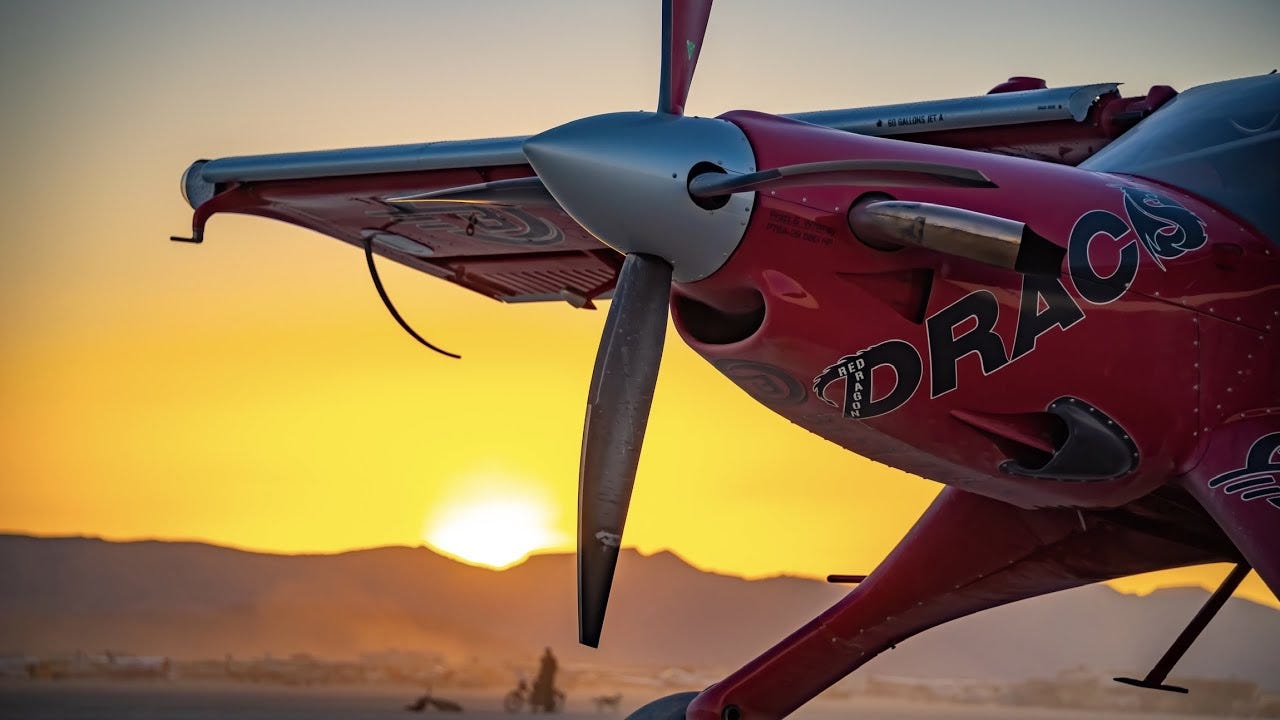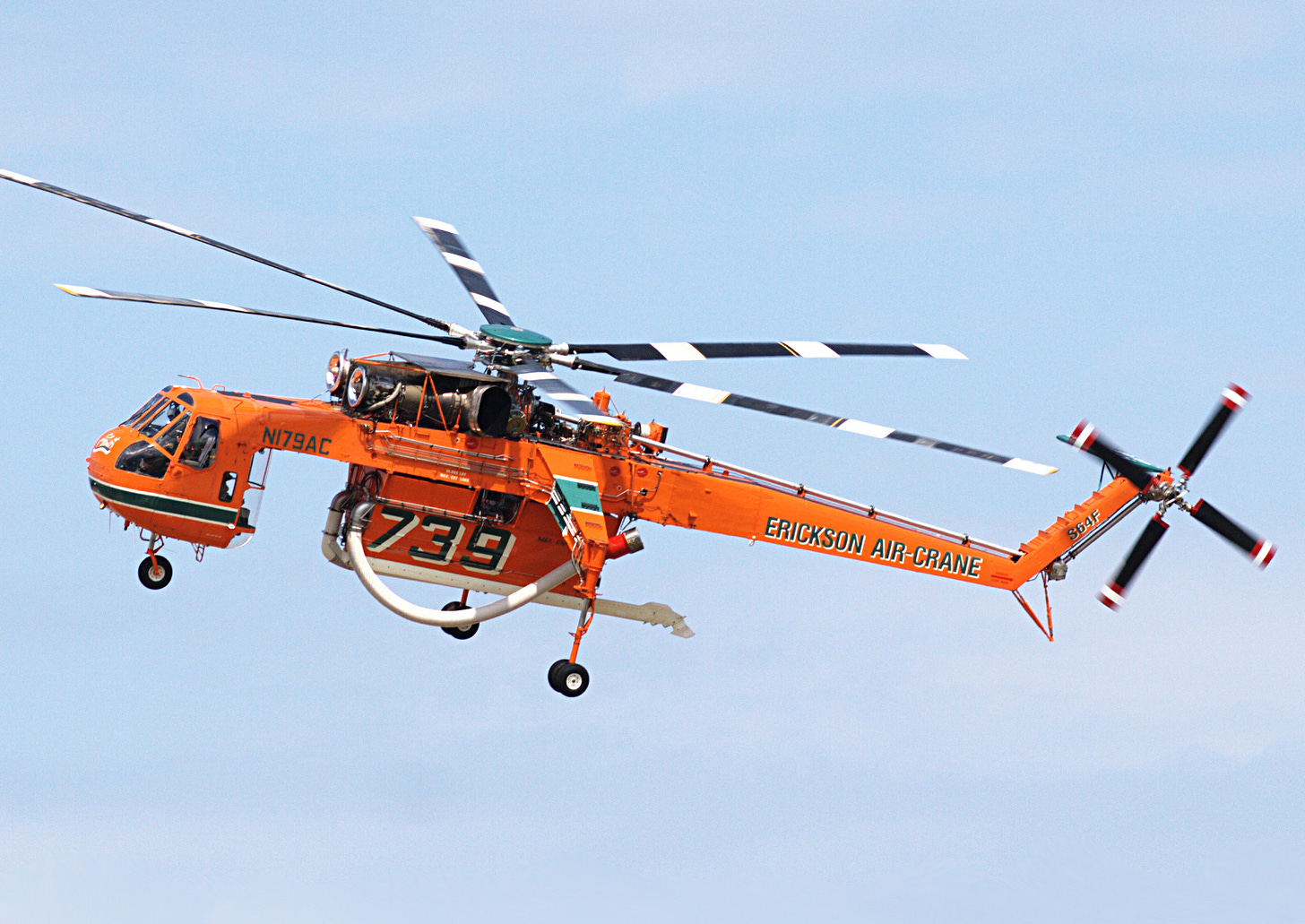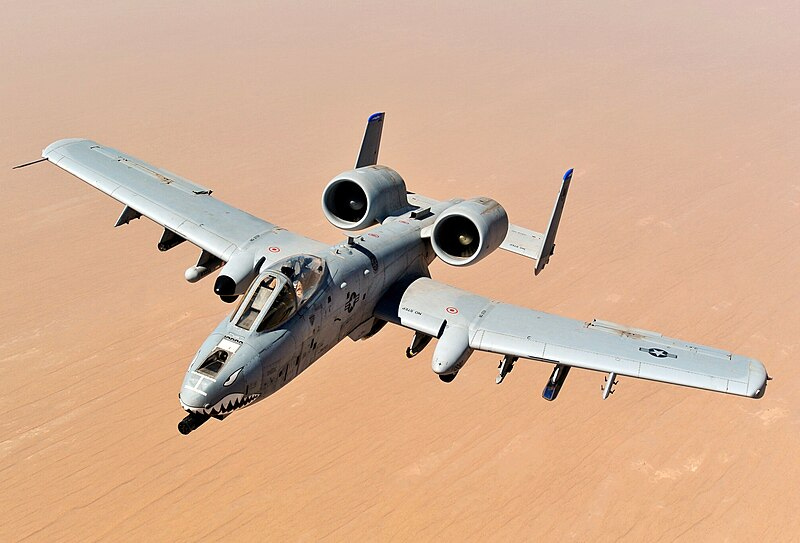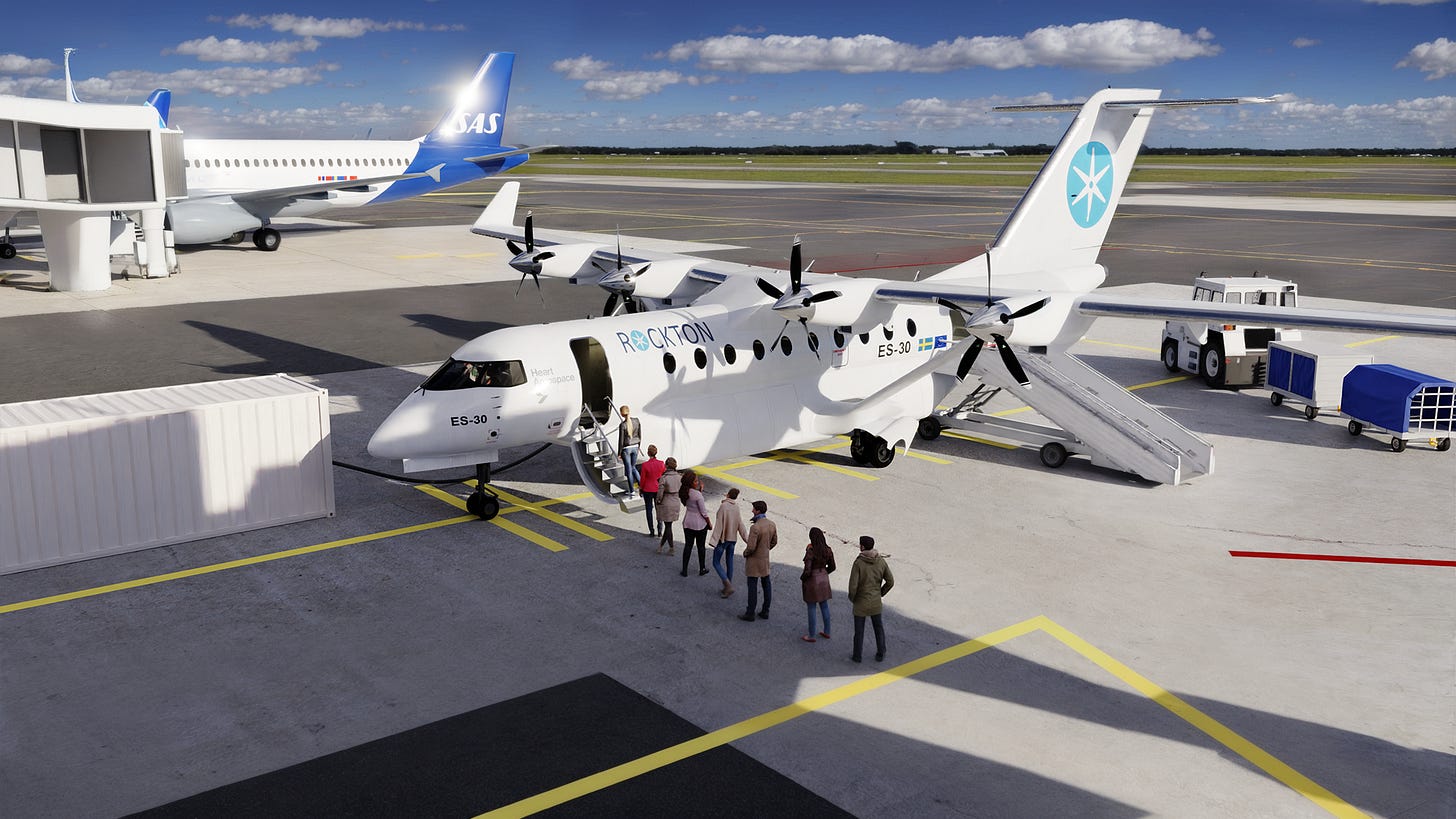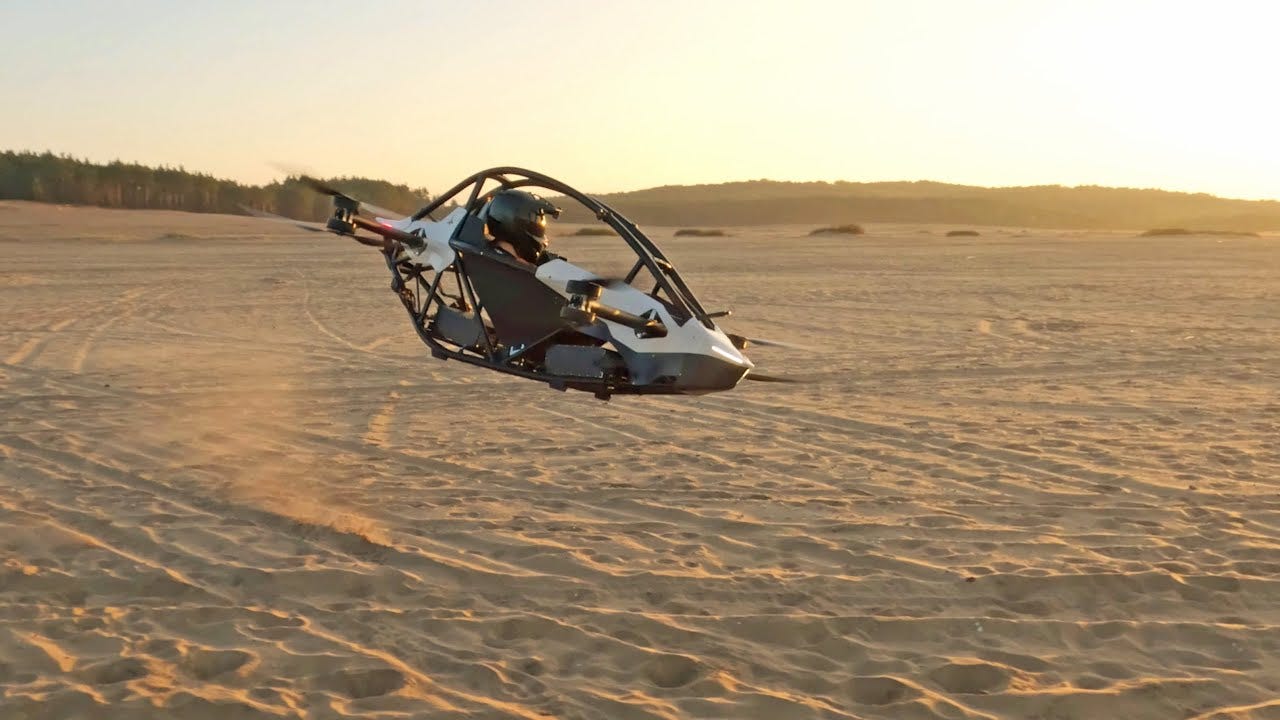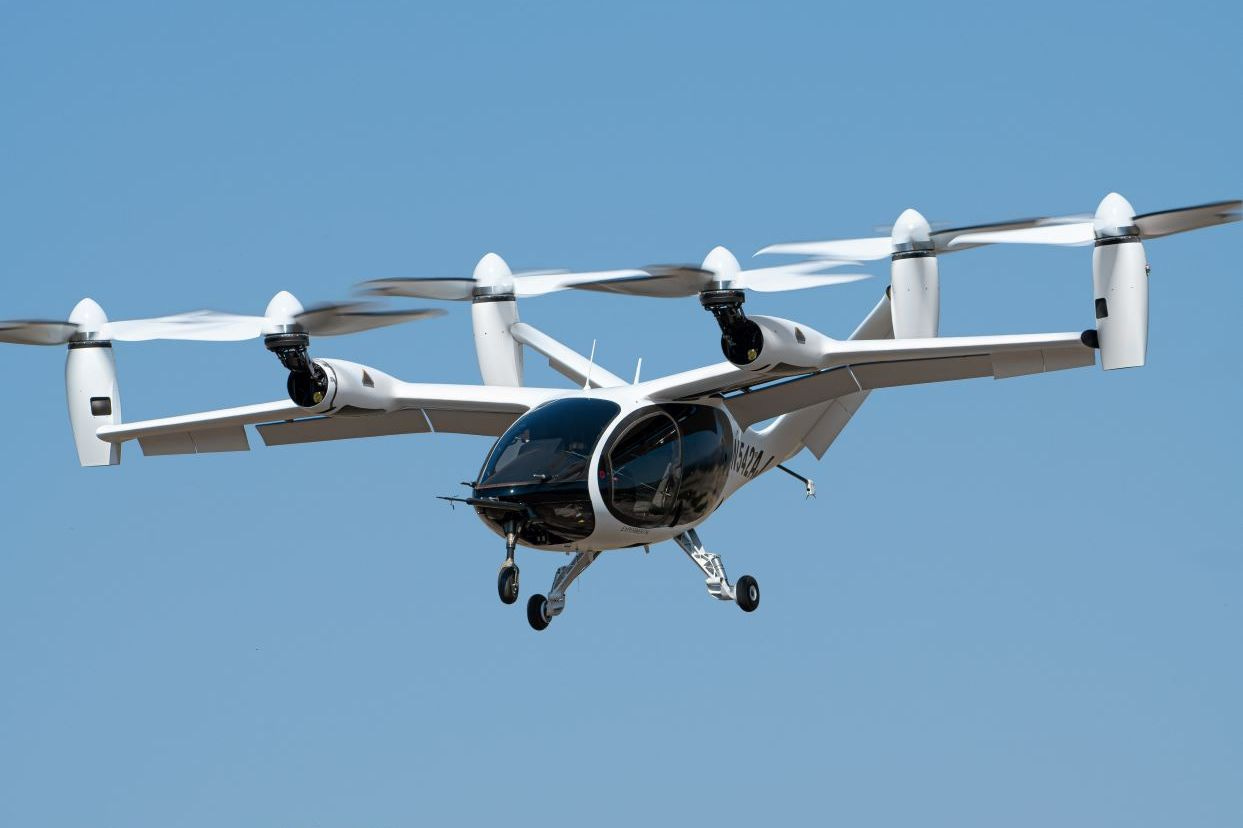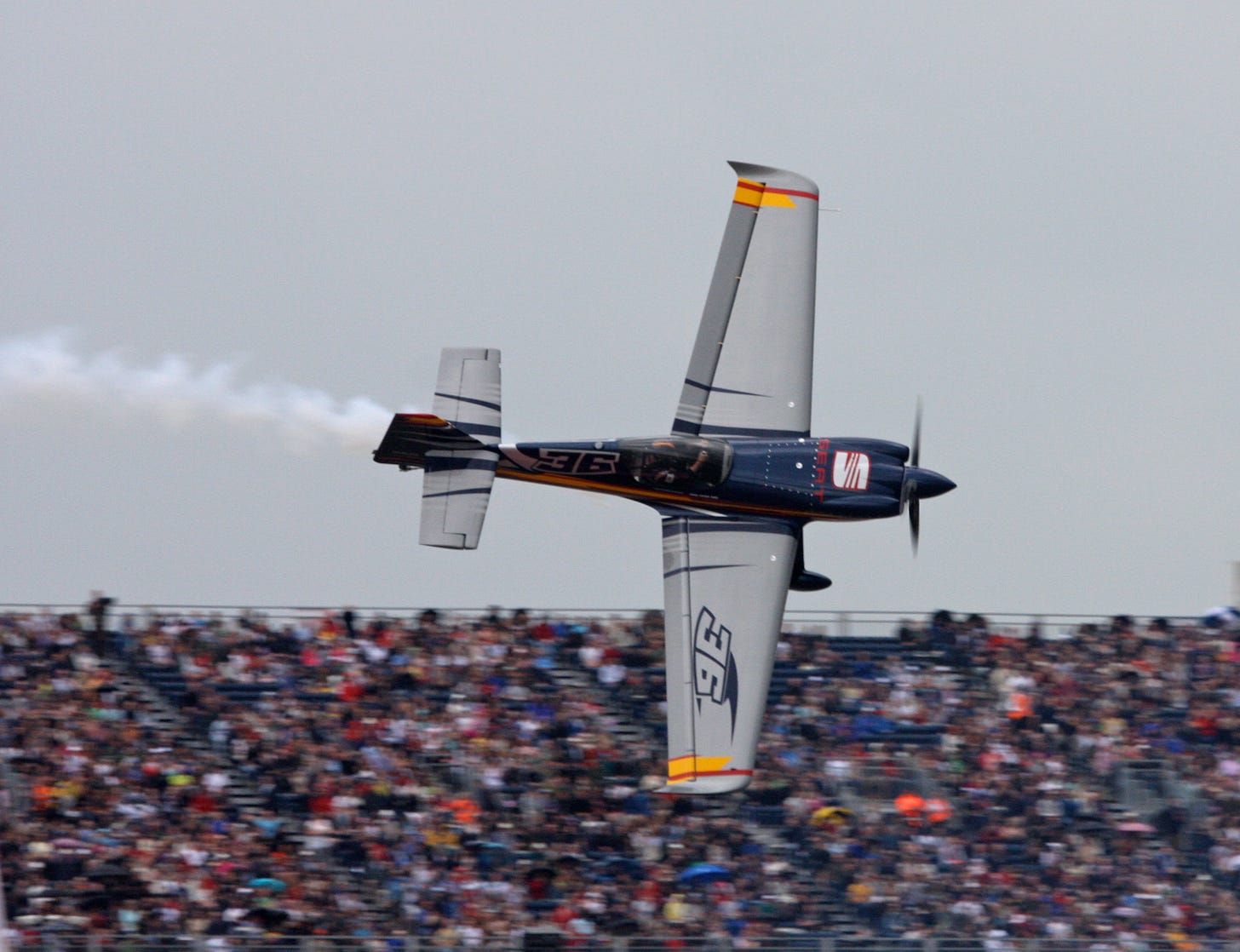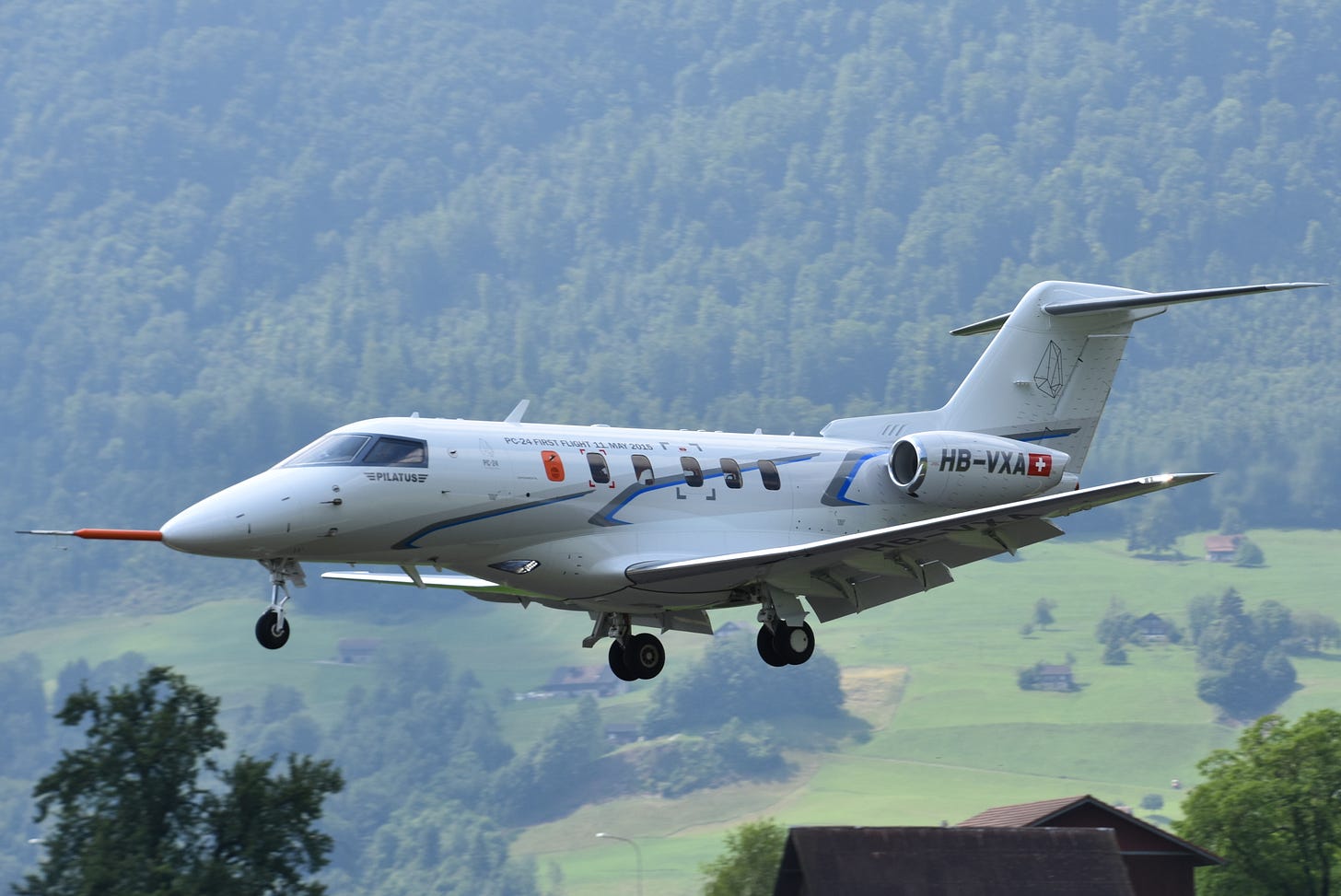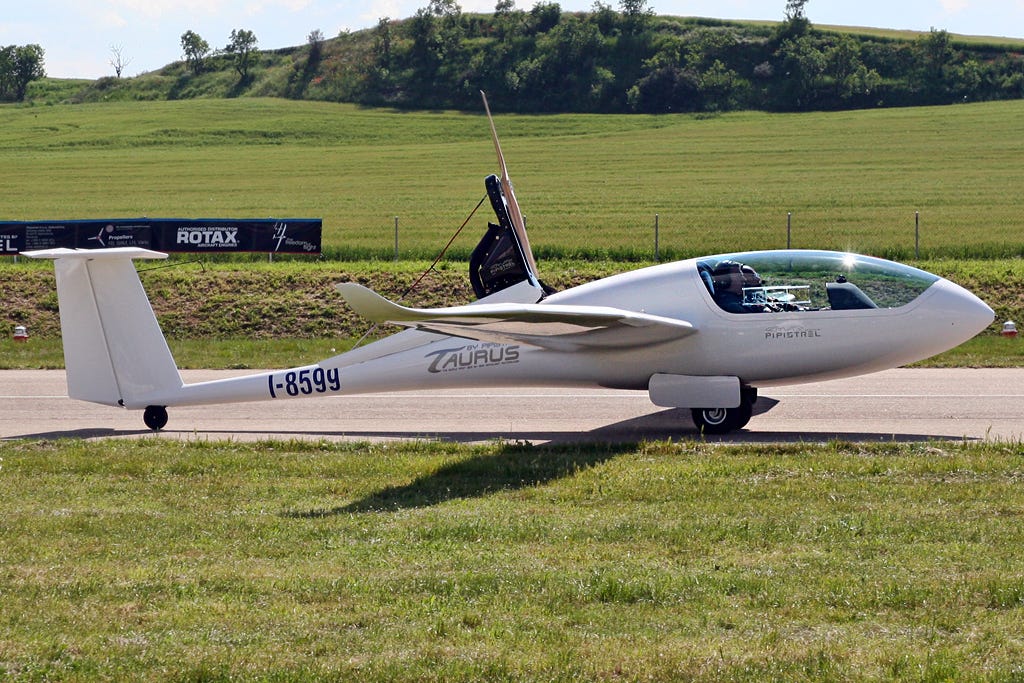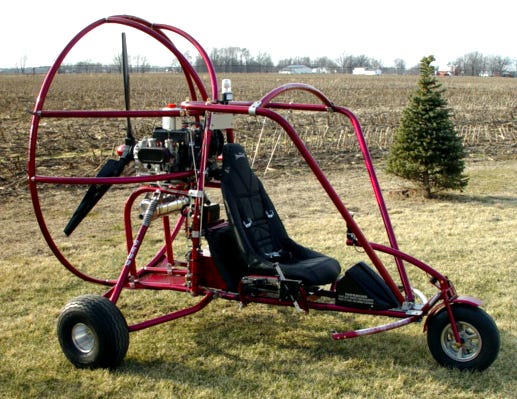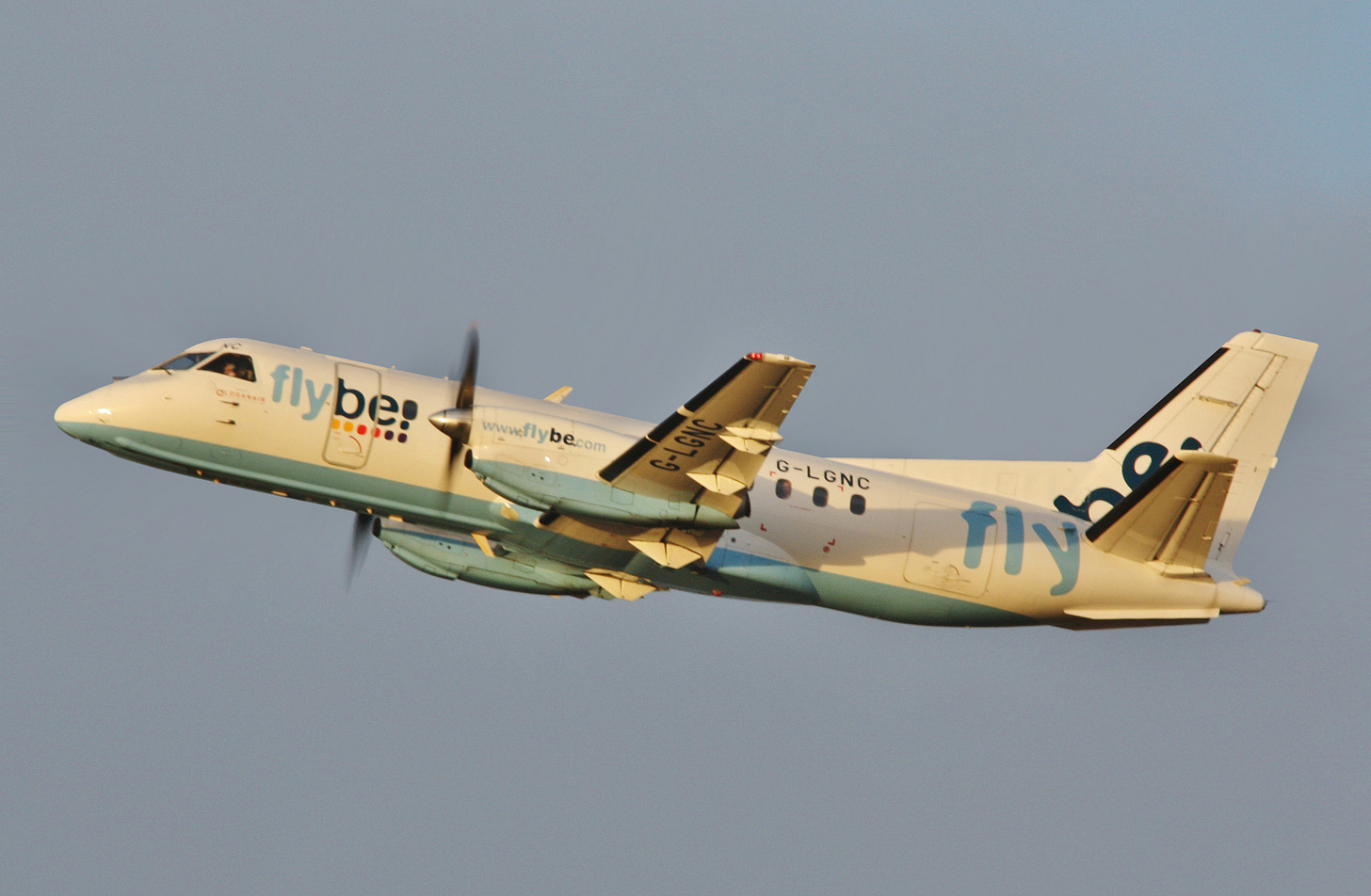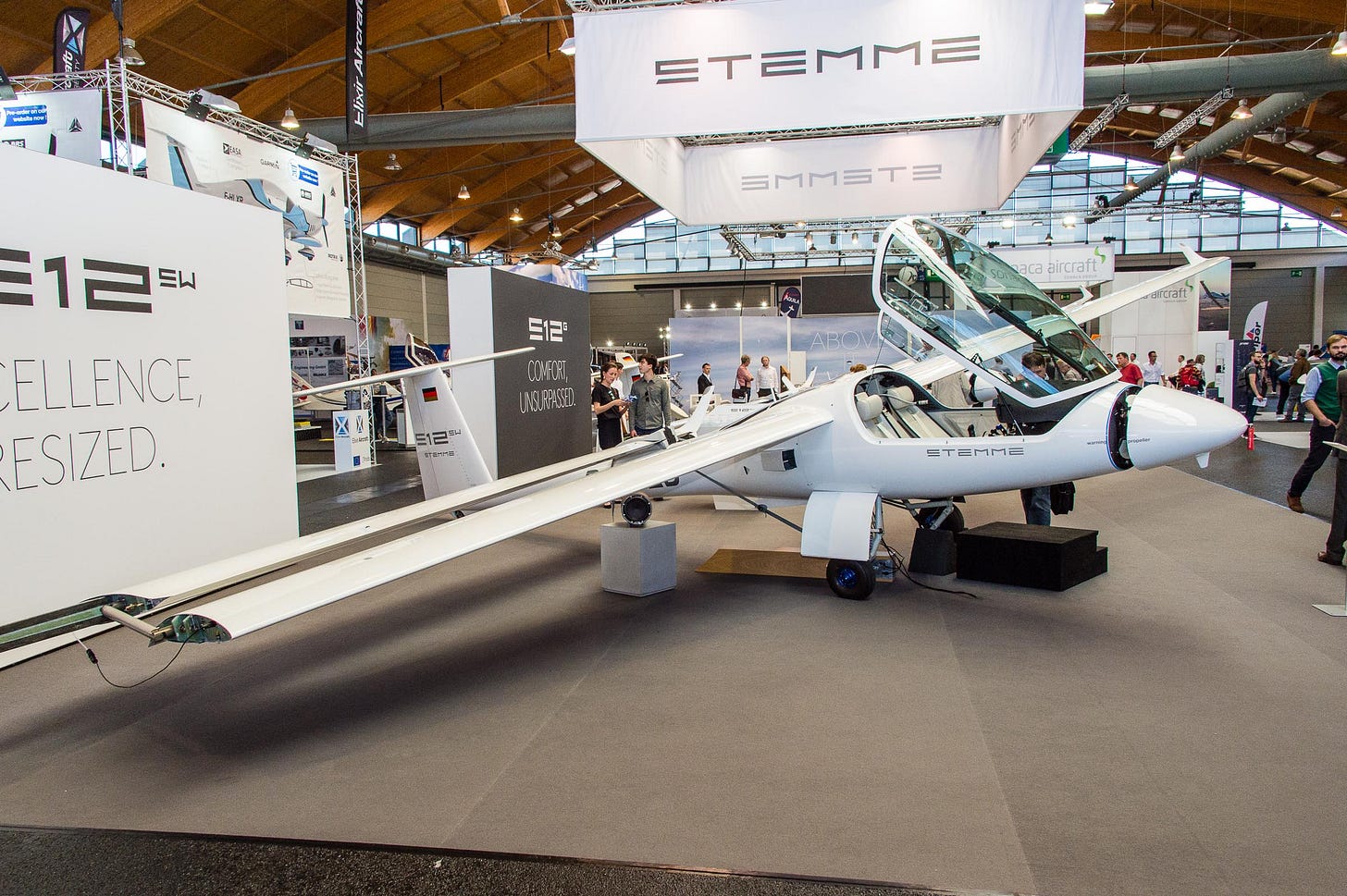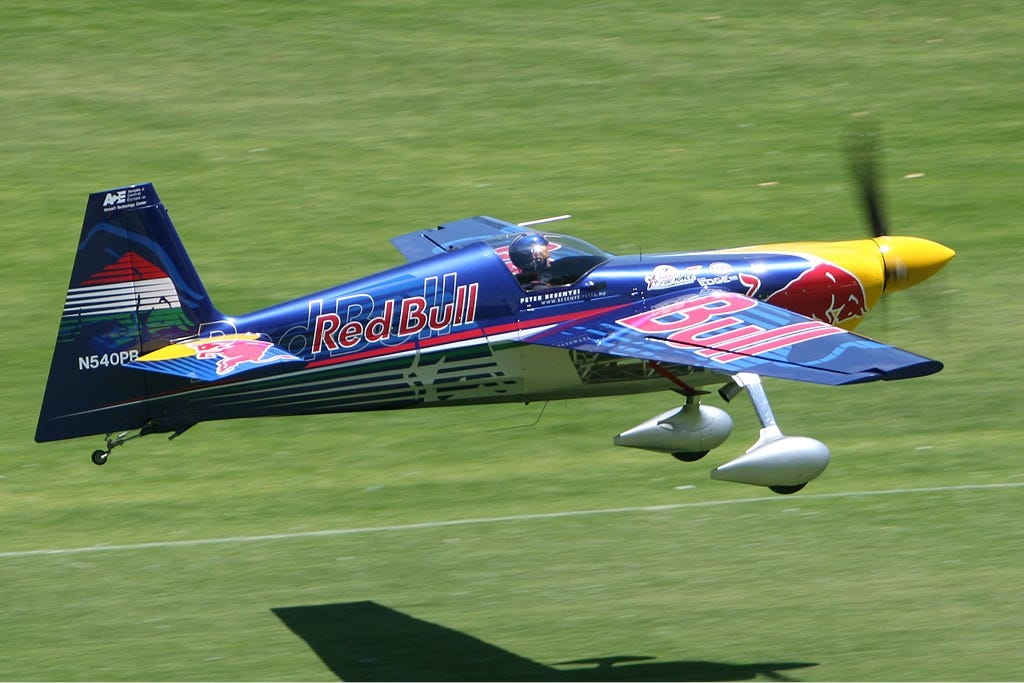The NEW aircraft in Microsoft Flight Simulator 2024
Following a little research on the mighty internet, here’s the new aircraft in Microsoft Flight Simulator 2024, and some information on each (courtesy of Google Gemini):
Air Tractor AT-802
The Air Tractor AT-802 is a versatile aircraft known for its agricultural and firefighting capabilities. It is a single-engine turboprop plane designed to carry large payloads of chemicals or water.
Key features and uses:
Agricultural applications: The AT-802 is widely used for crop dusting, seeding, and spraying fertilizers. Its large hopper capacity allows for efficient and effective operations.
Firefighting: The aircraft can be adapted for firefighting purposes, carrying and dropping large amounts of water or retardant on wildfires. Its agility and maneuverability make it suitable for operations in challenging terrain.
Military roles: The AT-802 has also been used in military roles, such as counter-insurgency and reconnaissance.
Amphibious capabilities: Certain variants of the AT-802 can be equipped with floats, allowing them to operate from water bodies and scoop up water for firefighting.
Specifications:
Manufacturer: Air Tractor
Engine: Pratt & Whitney Canada PT6
Wingspan: 18 meters (59 feet)
Length: 11 meters (36 feet)
Maximum takeoff weight: 2,951 kilograms (6,500 pounds)
Payload capacity: 4,195 kilograms (9,249 pounds)
Cruise speed: 356 kilometers per hour (221 miles per hour)
Range: 1,289 kilometers (800 miles)
Airbus A321LR
The Airbus A321LR is a long-range variant of the Airbus A321neo family. It is designed for ultra-long-haul flights, offering passengers a comfortable and efficient travel experience.
Key features and uses:
Ultra-long-haul capabilities: The A321LR is equipped with fuel-efficient engines and a modified wing design, allowing it to fly up to 7,400 kilometers (4,600 miles) non-stop. This makes it ideal for connecting distant cities without requiring refueling stops.
Passenger comfort: The A321LR offers a spacious and comfortable cabin layout, with ample legroom and overhead storage. It also features advanced in-flight entertainment systems and a variety of seating options to suit different preferences.
Fuel efficiency: The aircraft's advanced technology and efficient engines contribute to lower fuel consumption and reduced carbon emissions, making it a more environmentally friendly option for long-haul travel.
Versatility: The A321LR can be configured to accommodate a range of passenger capacities, from high-density seating for low-cost airlines to premium-class configurations for luxury travel.
Specifications:
Manufacturer: Airbus
Engines: Pratt & Whitney PW1100G-JM or CFM International LEAP-1A33
Wingspan: 35.8 meters (117 feet)
Length: 44.5 meters (146 feet)
Maximum takeoff weight: 93,500 kilograms (206,000 pounds)
Maximum range: 7,400 kilometers (4,600 miles)
Typical seating capacity: 185-240 passengers
Airbus A330 (-200, -300, 300P2F)
The Airbus A330 is a wide-body jet airliner manufactured by Airbus. It is a popular choice for long-haul flights, offering a spacious and comfortable travel experience.
Key features and uses:
Wide-body design: The A330 features a wide fuselage, allowing for a spacious cabin layout with ample legroom and overhead storage. This makes it suitable for long-haul flights and provides a comfortable experience for passengers.
Versatile seating configurations: The A330 can be configured to accommodate a variety of seating arrangements, from high-density economy class to premium-class cabins with lie-flat seats. This flexibility allows airlines to tailor the aircraft to meet their specific needs.
Fuel efficiency: The A330 is equipped with fuel-efficient engines, which help to reduce operating costs and minimize environmental impact. This makes it a popular choice for airlines seeking to improve their bottom line and reduce their carbon footprint.
Range: The A330 has a long range, allowing it to fly non-stop to destinations around the world. This makes it ideal for connecting major cities and providing convenient travel options for passengers.
Cargo capabilities: The A330 can also be configured for cargo transport, making it a versatile aircraft that can be used for both passenger and freight operations.
Specifications:
Manufacturer: Airbus
Engines: Rolls-Royce Trent 700 or General Electric CF6-80E1
Wingspan: 60.3 meters (198 feet)
Length: 53.7 meters (176 feet)
Maximum takeoff weight: 247,000 kilograms (544,000 pounds)
Maximum range: 11,850 kilometers (7,350 miles)
Typical seating capacity: 250-300 passengers
Airbus A330-743L Beluga XL
The Airbus A330-743L Beluga XL is a unique wide-body transport aircraft designed to transport oversized cargo, primarily aircraft components. Its distinctive bulbous nose, reminiscent of a beluga whale, gives it its name.
Key Features and Purpose:
Oversized Cargo Transportation: The Beluga XL is specifically designed to carry massive components like aircraft wings, fuselages, and engines. Its wide, spacious cargo hold can accommodate these oversized items that would be impossible to transport by other means.
Aircraft Production Support: Airbus developed the Beluga XL to support the production of its aircraft models, particularly the A350. By efficiently transporting large components between manufacturing facilities, it streamlines the production process.
Derived from the A330: The Beluga XL is based on the Airbus A330-200F freighter, but with a significantly modified nose and cargo hold to accommodate the oversized payloads.
Specifications:
Length: 63 meters (206 feet)
Wingspan: 60.3 meters (198 feet)
Height: 17.7 meters (58 feet)
Maximum Takeoff Weight: 125,000 kilograms (275,578 pounds)
Maximum Payload: 50,500 kilograms (111,264 pounds)
Range: 4,260 kilometers (2,650 miles)
Unique Features:
Enlarged Cargo Hold: The Beluga XL's cargo hold is significantly larger than that of the original BelugaST, allowing it to carry more components per flight.
Bulbous Nose: The distinctive nose shape provides the necessary space for loading and unloading oversized cargo.
Specialized Handling Equipment: Airbus has developed specialized equipment to handle and transport the massive components that the Beluga XL carries.
The Airbus Beluga XL is a remarkable aircraft that plays a crucial role in the global aerospace industry. Its ability to transport oversized cargo efficiently and reliably has made it an invaluable asset for Airbus and other companies involved in aircraft manufacturing.
Airbus A400M Atlas
The Airbus A400M Atlas is a large military transport aircraft designed to replace the C-130 Hercules. It is capable of carrying a wide variety of cargo, including troops, vehicles, and equipment, over long distances.
Key features and uses:
Military transport: The A400M is primarily used for military transport, carrying troops, vehicles, and equipment to remote locations. It can also be used for medical evacuation and humanitarian aid missions.
Strategic airlift: The A400M can be used for strategic airlift, transporting large quantities of equipment and supplies over long distances. This is essential for military operations in remote areas.
Aerial refueling: The A400M can be equipped with aerial refueling capabilities, allowing it to refuel other aircraft in flight. This extends the range of fighter jets and other combat aircraft.
Cargo versatility: The A400M can carry a wide variety of cargo, including vehicles, pallets, and bulk cargo. It can also be configured to transport troops and medical patients.
Advanced technology: The A400M is equipped with advanced technology, including fly-by-wire controls and a glass cockpit. This makes it easier to fly and more efficient.
Specifications:
Manufacturer: Airbus Military
Engines: Powerjet TP400-D6
Wingspan: 42.05 meters (138 feet)
Length: 45.57 meters (149 feet)
Height: 14.76 meters (48 feet)
Maximum takeoff weight: 110,000 kilograms (242,500 pounds)
Maximum payload: 37,500 kilograms (82,700 pounds)
Range: 8,000 kilometers (5,000 miles)
Airbus Helicopter H125
The Airbus Helicopters H125 is a lightweight multi-purpose helicopter that is widely used for a variety of purposes, including civilian, military, and law enforcement. It is known for its reliability, versatility, and ease of maintenance.
Key features and uses:
Civilian applications: The H125 is commonly used for civilian applications such as helicopter tours, sightseeing, corporate transport, and flight training. Its compact size and maneuverability make it ideal for urban environments.
Military and law enforcement: The H125 is also used by military and law enforcement agencies for tasks such as search and rescue, reconnaissance, and counter-terrorism operations. Its agility and speed make it well-suited for these missions.
Emergency medical services (EMS): The H125 is a popular choice for EMS services, as it can quickly transport patients to hospitals for critical care. Its spacious cabin and medical equipment make it well-suited for this role.
Agricultural applications: The H125 can also be used for agricultural applications such as crop dusting, aerial surveying, and livestock monitoring. Its versatility and efficiency make it a valuable tool for farmers and ranchers.
Specifications:
Manufacturer: Airbus Helicopters
Engine: Turbomeca Arrius 2R
Rotor diameter: 10.57 meters (34 feet 8 inches)
Length: 9.75 meters (32 feet)
Height: 3.20 meters (10 feet 6 inches)
Maximum takeoff weight: 1,700 kilograms (3,748 pounds)
Maximum speed: 222 kilometers per hour (138 miles per hour)
Range: 650 kilometers (404 miles)
Airbus Helicopter H225
The Airbus Helicopters H225 is a medium-sized multi-purpose helicopter that is widely used for a variety of purposes, including civilian, military, and offshore operations. It is known for its reliability, versatility, and spacious cabin.
Key features and uses:
Offshore operations: The H225 is a popular choice for offshore operations, such as transporting personnel and equipment to and from oil and gas platforms. Its long range and large cabin make it well-suited for this role.
Search and rescue: The H225 is also used for search and rescue missions, both at sea and on land. Its powerful engines and spacious cabin allow it to carry large numbers of people and equipment.
Military applications: The H225 is used by military forces around the world for a variety of tasks, including troop transport, medical evacuation, and search and rescue. Its versatility and reliability make it a valuable asset for military operations.
Civilian applications: The H225 can also be used for civilian applications, such as helicopter tours, corporate transport, and firefighting. Its spacious cabin and comfortable seating make it a popular choice for passengers.
Specifications:
Manufacturer: Airbus Helicopters
Engines: Turbomeca Makila 2
Rotor diameter: 15.24 meters (50 feet)
Length: 16.58 meters (54 feet 5 inches)
Height: 5.36 meters (17 feet 7 inches)
Maximum takeoff weight: 11,000 kilograms (24,250 pounds)
Maximum speed: 246 kilometers per hour (153 miles per hour)
Range: 750 kilometers (466 miles)
Airship Industries Skyship 600
The Airship Industries Skyship 600 is a modern airship designed for a variety of commercial applications. It is a hybrid airship that combines elements of both blimps and rigid airships, offering a unique blend of maneuverability, payload capacity, and environmental friendliness.
Key features and uses:
Hybrid design: The Skyship 600 features a hybrid design that combines elements of both blimps and rigid airships. This allows it to achieve a balance of maneuverability, payload capacity, and stability.
Environmental friendliness: The Skyship 600 is powered by clean energy sources such as solar panels and batteries, making it a more environmentally friendly option compared to traditional aircraft.
Large payload capacity: The Skyship 600 can carry a significant payload, making it suitable for transporting cargo, advertising banners, and even passengers.
Versatility: The Skyship 600 can be used for a variety of applications, including aerial advertising, cargo transport, passenger transportation, and scientific research.
Quiet operation: The Skyship 600 is designed to be very quiet, making it suitable for operations in urban areas and sensitive environments.
Specifications:
Length: 142 meters (466 feet)
Diameter: 23 meters (75 feet)
Maximum payload: 10,000 kilograms (22,046 pounds)
Cruise speed: 60 knots (111 kilometers per hour)
Range: 3,000 nautical miles (5,556 kilometers)
Amphibian Aerospace Albatross G111/HU16
The Amphibian Aerospace Albatross HU16 is a unique aircraft designed for amphibious operations. It is a high-wing, single-engine aircraft that can land on both land and water.
Key features and uses:
Amphibious capabilities: The Albatross HU16 is equipped with retractable floats, allowing it to land on water bodies such as lakes, rivers, and oceans. This makes it ideal for operations in remote areas where there are no suitable runways.
Versatile design: The Albatross HU16 can be used for a variety of purposes, including passenger transport, cargo delivery, search and rescue, and aerial surveys. Its versatility and amphibious capabilities make it a valuable asset in many different industries.
Rugged construction: The Albatross HU16 is built to withstand harsh conditions and can operate in a variety of environments. Its rugged construction and reliable performance make it a popular choice for commercial and military applications.
Large payload capacity: The Albatross HU16 can carry a significant payload, making it suitable for transporting cargo, passengers, or equipment over long distances.
Excellent visibility: The Albatross HU16's high-wing design provides excellent visibility for the pilot, making it easy to spot obstacles and other aircraft.
Specifications:
Length: 10.5 meters (34 feet 5 inches)
Wingspan: 15.2 meters (50 feet)
Height: 3.5 meters (11 feet 6 inches)
Maximum takeoff weight: 2,500 kilograms (5,511 pounds)
Maximum payload: 1,000 kilograms (2,204 pounds)
Cruise speed: 200 kilometers per hour (124 miles per hour)
Range: 1,000 kilometers (621 miles)
Archer Midnight
Archer Midnight is a revolutionary electric vertical takeoff and landing (eVTOL) aircraft designed to redefine urban transportation. As an air taxi, it aims to provide a faster, more efficient, and environmentally friendly alternative to traditional ground-based transportation.
Key Features of the Archer Midnight:
Electric Propulsion: Powered by electric motors, the Midnight offers a quieter and cleaner flight experience compared to traditional aircraft.
Vertical Takeoff and Landing: Capable of taking off and landing vertically, the Midnight can operate from smaller landing pads, eliminating the need for large airports.
Short-Range Travel: Designed for shorter trips within and between cities, the Midnight offers a convenient solution for commuting and urban travel.
Autonomous Capabilities: While initially piloted, Archer has plans to incorporate autonomous features in the future, potentially leading to fully autonomous flights.
The Future of Urban Air Mobility
The development of the Archer Midnight represents a significant step towards the future of urban air mobility. By offering a faster, more efficient, and environmentally friendly transportation option, it has the potential to transform the way people move around cities.
Boeing 737 MAX 8
The Boeing 737 MAX 8 is a single-aisle jet airliner manufactured by Boeing. It is a member of the Boeing 737 MAX family, which is a development of the previous Boeing 737 Next Generation (NG) series.
Key features and uses:
Fuel efficiency: The 737 MAX 8 is designed to be more fuel-efficient than its predecessors, thanks to the new LEAP-1B engines and improved aerodynamics.
Increased range: The 737 MAX 8 has a slightly increased range compared to the 737 NG, making it suitable for longer routes.
Passenger comfort: The 737 MAX 8 offers a comfortable and spacious cabin for passengers, with ample legroom and overhead storage.
Versatility: The 737 MAX 8 can be configured to accommodate a variety of seating arrangements, from high-density economy class to premium-class cabins with lie-flat seats.
Worldwide popularity: The 737 MAX 8 is one of the most popular commercial aircraft in the world, used by airlines of all sizes.
Specifications:
Manufacturer: Boeing
Engines: CFM International LEAP-1B
Wingspan: 35.8 meters (117 feet)
Length: 39.5 meters (129 feet)
Height: 12.5 meters (41 feet)
Maximum takeoff weight: 79,000 kilograms (174,160 pounds)
Maximum range: 6,570 kilometers (4,080 miles)
Typical seating capacity: 162-175 passengers
Boeing 747-400 Global Supertanker
The Boeing 747-400 Global Supertanker is the largest aerial firefighting aircraft in the world. A modified version of the iconic Boeing 747-400, it's designed to carry and drop massive amounts of fire retardant or water on wildfires.
Key Features:
Massive Capacity: The Supertanker can carry up to 19,600 U.S. gallons (74,000 liters) of fire retardant or water, significantly outpacing other aerial tankers.
Long Range: Its large fuel tanks allow it to travel long distances, making it a valuable asset in combating large-scale wildfires.
Speed and Efficiency: The Supertanker's powerful engines enable it to reach fire sites quickly, allowing for rapid response times.
Versatility: It can be used for a variety of firefighting missions, including direct drops on active fires and creating firebreaks.
Impact:
The Supertanker has been instrumental in combating major wildfires around the world. Its ability to drop such large quantities of fire retardant has helped to contain fires and protect valuable ecosystems.
Note: While the Supertanker was a valuable asset in firefighting, it's important to note that it has since been retired due to various factors, including operational challenges and the emergence of other firefighting technologies.
Boeing 747-400 LCF Dreamlifter
The Boeing 747-400 LCF Dreamlifter is a unique wide-body cargo aircraft specifically designed to transport oversized aircraft components, primarily for the Boeing 787 Dreamliner. It's a heavily modified version of the Boeing 747-400, with a distinctive bulged fuselage to accommodate the larger cargo.
Key Features:
Oversized Cargo Capacity: The Dreamlifter can carry three times the volume of a standard 747-400 freighter, making it ideal for transporting large aircraft components like fuselages, wings, and empennages.
Efficiency: It's designed to streamline the production process, reducing delivery times and costs compared to traditional shipping methods.
Unique Design: The enlarged fuselage is a hallmark feature, allowing for the transportation of oversized cargo that would otherwise be impossible by other means.
Role in Aircraft Production:
The Dreamlifter plays a crucial role in the global aviation industry, especially for Boeing. It's primarily used to transport 787 Dreamliner components from suppliers around the world to the final assembly site in Everett, Washington. This efficient transportation ensures a continuous supply of parts, contributing to the overall production efficiency of the 787 program.
In essence, the Boeing 747-400 LCF Dreamlifter is a specialized aircraft that has revolutionized the transportation of large aircraft components. Its unique design and capabilities have made it an essential tool for the aerospace industry.
Boeing C-17 Globemaster III
The Boeing C-17 Globemaster III is a large military transport aircraft designed to transport troops, vehicles, and equipment over long distances. It is known for its versatility, range, and ability to operate from austere airfields.
Key features and uses:
Strategic airlift: The C-17 is used for strategic airlift, transporting troops, vehicles, and equipment to remote locations around the world. It can also be used to provide humanitarian aid and disaster relief.
Tactical airlift: The C-17 can also be used for tactical airlift, supporting combat operations by transporting troops and supplies directly to the battlefield.
Aerial refueling: The C-17 can be equipped with aerial refueling capabilities, allowing it to refuel other aircraft in flight. This extends the range of fighter jets and other combat aircraft.
Cargo versatility: The C-17 can carry a wide variety of cargo, including vehicles, pallets, and bulk cargo. It can also be configured to transport troops and medical patients.
Short-field capabilities: The C-17 is designed to operate from austere airfields, including runways that are short, rough, or unpaved. This makes it ideal for supporting military operations in remote or hostile environments.
Specifications:
Manufacturer: Boeing
Engines: Pratt & Whitney F117-PW100
Wingspan: 51.8 meters (170 feet)
Length: 53 meters (174 feet)
Height: 14.8 meters (48 feet)
Maximum takeoff weight: 129,500 kilograms (285,500 pounds)
Maximum payload: 77,500 kilograms (170,900 pounds)
Range: 9,650 kilometers (6,000 miles)
Boeing CH-47D Chinook
The Boeing CH-47D Chinook is a heavy-lift helicopter used primarily by the United States Army. It is known for its distinctive tandem rotors and its ability to transport large payloads over long distances.
Key features and uses:
Heavy-lift capabilities: The CH-47D is capable of lifting and transporting extremely heavy loads, including vehicles, equipment, and even personnel. This makes it invaluable for military operations and humanitarian relief efforts.
Versatility: The CH-47D can be configured for a variety of missions, including troop transport, medical evacuation, search and rescue, and cargo hauling.
Long range: The CH-47D has a long range, allowing it to operate over large distances. This makes it ideal for supporting military operations in remote areas.
Tandem rotors: The CH-47D's distinctive tandem rotors provide excellent stability and lift, making it capable of operating in challenging conditions.
External sling load capabilities: The CH-47D can carry heavy loads externally using a sling, allowing it to transport objects that are too large or heavy to fit inside the cabin.
Specifications:
Manufacturer: Boeing Helicopters
Engines: General Electric T64-GE-750
Rotor diameter: 18.3 meters (60 feet)
Length: 30.5 meters (100 feet)
Height: 5.8 meters (19 feet)
Maximum takeoff weight: 22,400 kilograms (49,400 pounds)
Maximum payload: 10,200 kilograms (22,500 pounds)
Range: 690 kilometers (430 miles)
Cessna 188 AGTruck
The Cessna 188 AGTruck is a specialized agricultural aircraft designed for crop dusting, seeding, and spraying. It is a modified version of the Cessna 180, featuring a larger fuselage and a more powerful engine to accommodate the increased payload.
Key features and uses:
Agricultural applications: The AGTruck is primarily used for agricultural applications, such as crop dusting, seeding, and spraying fertilizers and pesticides. Its large hopper capacity allows for efficient and effective operations.
Versatility: The AGTruck can be equipped with a variety of spray systems and equipment to suit different agricultural needs. This makes it a versatile tool for farmers and ranchers.
Rugged construction: The AGTruck is built to withstand the harsh conditions of agricultural operations, including exposure to chemicals and extreme weather.
Maneuverability: The AGTruck is designed to be highly maneuverable, allowing pilots to fly low and slow over crops for precise applications.
Reliability: The AGTruck is known for its reliability and durability, making it a popular choice for agricultural operations.
Specifications:
Manufacturer: Cessna
Engine: Continental O-470-R
Wingspan: 10.67 meters (35 feet 1 inch)
Length: 8.28 meters (27 feet 2 inches)
Height: 2.87 meters (9 feet 5 inches)
Maximum takeoff weight: 1,225 kilograms (2,700 pounds)
Maximum payload: 680 kilograms (1,500 pounds)
Cruise speed: 185 kilometers per hour (115 miles per hour)
Range: 1,000 kilometers (621 miles)
Cessna 400 Corvalis TT
The Cessna 400 Corvalis TT is a high-performance single-engine piston aircraft designed for personal and business use. It is known for its speed, efficiency, and comfortable cabin.
Key features and uses:
Speed and efficiency: The Corvalis TT is one of the fastest single-engine piston aircraft available, offering a cruising speed of up to 280 knots (520 km/h). This makes it ideal for long-distance travel and business trips.
Comfortable cabin: The Corvalis TT features a spacious and comfortable cabin with ample legroom and overhead storage. It also has a large baggage compartment for carrying luggage and equipment.
Versatility: The Corvalis TT can be configured for a variety of uses, including personal travel, business trips, and charter flights.
Fuel efficiency: The Corvalis TT is designed to be fuel-efficient, with a range of up to 1,600 nautical miles (2,963 km). This makes it a cost-effective option for long-distance travel.
Safety features: The Corvalis TT is equipped with a number of safety features, including a glass cockpit, weather radar, and a ballistic parachute system.
Specifications:
Manufacturer: Cessna
Engine: Continental TSIO-550-C
Wingspan: 10.67 meters (35 feet 1 inch)
Length: 8.28 meters (27 feet 2 inches)
Height: 2.87 meters (9 feet 5 inches)
Maximum takeoff weight: 1,474 kilograms (3,250 pounds)
Cruise speed: 280 knots (520 km/h)
Range: 1,600 nautical miles (2,963 km)
Cessna 404 Titan
The Cessna 404 Titan is a twin-engine light transport aircraft designed for personal and business use. It is known for its versatility, comfort, and reliability.
Key features and uses:
Versatility: The Titan can be used for a variety of purposes, including personal travel, business trips, charter flights, and cargo transport.
Comfortable cabin: The Titan features a spacious and comfortable cabin with ample legroom and overhead storage. It also has a large baggage compartment for carrying luggage and equipment.
Reliability: The Titan is known for its reliability and durability, making it a popular choice for personal and business owners.
Good performance: The Titan offers good performance, with a cruising speed of up to 220 knots (407 km/h) and a range of up to 1,000 nautical miles (1,852 km).
Safety features: The Titan is equipped with a number of safety features, including a glass cockpit, weather radar, and a ballistic parachute system.
Specifications:
Manufacturer: Cessna
Engines: Continental TSIO-520-CB
Wingspan: 11.89 meters (39 feet)
Length: 9.45 meters (31 feet)
Height: 3.35 meters (11 feet)
Maximum takeoff weight: 2,268 kilograms (5,000 pounds)
Cruise speed: 220 knots (407 km/h)
Range: 1,000 nautical miles (1,852 km)
Cessna 408 SkyCourier
The Cessna 408 SkyCourier is a new twin-engine utility aircraft designed for a variety of commercial applications. It is a high-wing, single-tail design with a large cargo door and spacious cabin.
Key features and uses:
Cargo transport: The SkyCourier is primarily designed for cargo transport, with a large cargo door and spacious cabin that can accommodate a variety of payloads. It is ideal for transporting freight, medical supplies, and other essential goods.
Passenger transport: The SkyCourier can also be configured for passenger transport, with a comfortable and spacious cabin that can accommodate up to nine passengers.
Versatility: The SkyCourier can be used for a variety of applications, including cargo transport, passenger transport, medical evacuation, and aerial surveys.
Fuel efficiency: The SkyCourier is designed to be fuel-efficient, with a range of up to 900 nautical miles (1,667 km).
Reliability: The SkyCourier is built on the proven platform of the Cessna Caravan, ensuring reliability and durability.
Specifications:
Manufacturer: Cessna
Engines: Pratt & Whitney Canada PT6A-36
Wingspan: 13.72 meters (45 feet)
Length: 10.67 meters (35 feet)
Height: 3.81 meters (12 feet 6 inches)
Maximum takeoff weight: 3,175 kilograms (7,000 pounds)
Maximum payload: 1,134 kilograms (2,500 pounds)
Cruise speed: 240 knots (444 km/h)
Range: 900 nautical miles (1,667 km)
CGS Hawk Arrow II
The CGS Hawk Arrow II is a single-seat, aerobatic glider designed by the Czech Gliding Society (CGS). It is known for its excellent performance and maneuverability, making it a popular choice for competitive gliding.
Key features and uses:
Aerobatic capabilities: The Hawk Arrow II is designed for aerobatic flying, with a wide range of maneuvers possible. It is a popular choice for competitive gliding and airshows.
High performance: The Hawk Arrow II offers excellent performance, with a high glide ratio and good speed. This makes it a competitive glider in various classes.
Lightweight construction: The Hawk Arrow II is constructed from lightweight materials, such as carbon fiber, which helps to reduce weight and improve performance.
Comfortable cockpit: The cockpit is designed for comfort and visibility, with a good field of view and ergonomic controls.
Versatility: The Hawk Arrow II can be used for a variety of gliding activities, including cross-country flying, soaring, and aerobatics.
Specifications:
Manufacturer: CGS
Wingspan: 15 meters (49 feet)
Length: 6.8 meters (22 feet)
Height: 1.8 meters (6 feet)
Empty weight: 250 kilograms (551 pounds)
Maximum takeoff weight: 450 kilograms (992 pounds)
Glide ratio: 50:1
Best glide speed: 100 km/h (62 mph)
De Havilland Canada CL-415
The De Havilland Canada CL-415 is a twin-engine amphibious aircraft designed for firefighting and water bombing. It is known for its versatility, speed, and efficiency, making it a valuable asset in combating wildfires.
Key features and uses:
Amphibious capabilities: The CL-415 is equipped with retractable floats, allowing it to land on water bodies and scoop up water for firefighting. This makes it ideal for operations in remote areas where there are no suitable runways.
High-performance: The CL-415 is a high-performance aircraft, capable of reaching high altitudes and flying at high speeds. This allows it to cover large areas quickly and efficiently.
Large water capacity: The CL-415 can carry up to 6,137 liters (1,615 gallons) of water or fire retardant, making it one of the most effective firefighting aircraft in the world.
Versatility: The CL-415 can also be used for a variety of other purposes, such as aerial surveys, search and rescue, and medical evacuation.
Reliability: The CL-415 is known for its reliability and durability, making it a popular choice for firefighting agencies around the world.
Specifications:
Manufacturer: De Havilland Canada
Engines: Pratt & Whitney PT6A-65B
Wingspan: 20.8 meters (68 feet)
Length: 16.2 meters (53 feet)
Height: 5.8 meters (19 feet)
Maximum takeoff weight: 11,500 kilograms (25,353 pounds)
Maximum speed: 370 kilometers per hour (230 miles per hour)
Range: 1,600 kilometers (1,000 miles)
Dornier Seastar
The Dornier Seastar is a twin-engine, amphibious aircraft designed by Dornier Flugzeugwerke. It is known for its versatility, comfort, and excellent performance, making it a popular choice for personal and business use.
Key features and uses:
Amphibious capabilities: The Seastar can land on both land and water, making it ideal for operations in remote areas where there are no suitable runways.
Comfortable cabin: The Seastar features a spacious and comfortable cabin with ample legroom and overhead storage. It also has a large baggage compartment for carrying luggage and equipment.
Versatility: The Seastar can be used for a variety of purposes, including personal travel, business trips, charter flights, and coastal patrols.
Good performance: The Seastar offers good performance, with a cruising speed of up to 220 knots (407 km/h) and a range of up to 1,000 nautical miles (1,852 km).
Safety features: The Seastar is equipped with a number of safety features, including a glass cockpit, weather radar, and a ballistic parachute system.
Specifications:
Manufacturer: Dornier Flugzeugwerke
Engines: Lycoming T534-1A
Wingspan: 15.4 meters (50 feet 7 inches)
Length: 10.6 meters (34 feet 10 inches)
Height: 3.8 meters (12 feet 6 inches)
Maximum takeoff weight: 2,722 kilograms (6,000 pounds)
Cruise speed: 220 knots (407 km/h)
Range: 1,000 nautical miles (1,852 km)
Draco X
The Draco X is a unique aircraft designed by Draco Aerospace. It is a hybrid aircraft that combines elements of a helicopter and a fixed-wing aircraft, allowing it to take off and land vertically like a helicopter while cruising horizontally like a fixed-wing aircraft.
Key features and uses:
Vertical takeoff and landing (VTOL): The Draco X is capable of taking off and landing vertically, similar to a helicopter. This allows it to operate from small landing areas that are inaccessible to fixed-wing aircraft.
Horizontal cruising: Once airborne, the Draco X can transition to horizontal flight, allowing it to cruise at high speeds and long distances. This makes it ideal for long-distance travel and transportation.
Versatility: The Draco X can be used for a variety of applications, including personal travel, business trips, cargo transport, and emergency services.
Fuel efficiency: The Draco X is designed to be fuel-efficient, with a range of up to 1,000 kilometers (621 miles).
Safety features: The Draco X is equipped with a number of safety features, including a ballistic parachute system and a redundant flight control system.
Specifications:
Manufacturer: Draco Aerospace
Engines: Electric motors
Wingspan: 10.5 meters (34 feet 5 inches)
Length: 7.5 meters (24 feet 7 inches)
Height: 2.5 meters (8 feet 2 inches)
Maximum takeoff weight: 1,000 kilograms (2,204 pounds)
Cruise speed: 200 kilometers per hour (124 miles per hour)
Range: 1,000 kilometers (621 miles)
Erickson S-64F Aircrane
The Erickson S-64F Aircrane is a heavy-lift helicopter known for its firefighting capabilities. It is a modified version of the Sikorsky S-64 Skycrane, featuring a larger fuselage and a more powerful engine to accommodate the increased payload.
Key features and uses:
Firefighting: The Aircrane is primarily used for firefighting, carrying and dropping large amounts of water or fire retardant on wildfires. Its large water bucket capacity allows it to quickly and effectively suppress fires.
Heavy-lift capabilities: The Aircrane can also be used for heavy-lift operations, such as transporting equipment, materials, and even buildings. Its powerful engines and large lifting capacity make it a valuable asset in construction and disaster relief efforts.
Versatility: The Aircrane can be adapted for a variety of tasks, including search and rescue, aerial surveys, and cargo transport.
Reliability: The Aircrane is known for its reliability and durability, making it a popular choice for firefighting agencies and construction companies.
Specifications:
Manufacturer: Erickson Air-Crane
Engines: General Electric T64-GE-750
Rotor diameter: 18.3 meters (60 feet)
Length: 30.5 meters (100 feet)
Height: 5.8 meters (19 feet)
Maximum takeoff weight: 22,400 kilograms (49,400 pounds)
Maximum payload: 10,200 kilograms (22,500 pounds)
Range: 690 kilometers (430 miles)
Fairchild Republic A-10 Thunderbolt II
The Fairchild Republic A-10 Thunderbolt II is a single-engine jet aircraft designed primarily for close air support (CAS). It is known for its rugged construction, powerful armament, and distinctive high-wing design.
Key features and uses:
Close air support: The A-10 is designed to provide close air support to ground troops, attacking enemy tanks, armored vehicles, and infantry. Its powerful armament and low-level flight capabilities make it highly effective for this role.
Rugged construction: The A-10 is built to withstand damage from enemy fire, with a titanium-alloy tub that can protect the pilot from small arms fire and shrapnel.
Powerful armament: The A-10 is armed with a 30mm GAU-8 Avenger Gatling gun, which is considered one of the most powerful aircraft cannons in the world. It can also carry a variety of missiles and bombs for attacking ground targets.
Low-level flight capabilities: The A-10 is designed to fly at low altitudes, making it difficult for enemy anti-aircraft defenses to target.
Versatility: The A-10 can also be used for a variety of other missions, including search and rescue, medical evacuation, and aerial reconnaissance.
Specifications:
Manufacturer: Fairchild Republic
Engine: General Electric TF34-100
Wingspan: 17.3 meters (56 feet 10 inches)
Length: 13.9 meters (45 feet 7 inches)
Height: 4.4 meters (14 feet 5 inches)
Maximum takeoff weight: 10,500 kilograms (23,150 pounds)
Maximum speed: 820 kilometers per hour (510 miles per hour)
Range: 1,630 kilometers (1,010 miles)
FlyDoo Hot Air Balloon
The FlyDoo Hot Air Balloon is a popular choice for aerial adventures and scenic flights. It offers a unique and unforgettable experience, allowing you to soar above the ground and enjoy breathtaking views.
Key features and benefits:
Scenic flights: Hot air balloons provide a peaceful and relaxing way to enjoy stunning views of the countryside, cities, and natural landmarks.
Unique experience: Flying in a hot air balloon is a truly unique experience that is unlike any other form of transportation.
Environmental friendly: Hot air balloons are powered by hot air, making them a sustainable and environmentally friendly option for travel.
Personalized service: Hot air balloon companies often offer personalized service, including champagne toasts and customized flight plans.
Heart Aerospace ES-30
The Heart Aerospace ES-30 is a new electric aircraft being developed by the Swedish company Heart Aerospace. It is designed to be a zero-emission, sustainable alternative to traditional small commercial aircraft.
Key features and uses:
Electric propulsion: The ES-30 is powered by electric motors, eliminating the need for fossil fuels and reducing its environmental impact.
Regional flights: The ES-30 is designed for regional flights, connecting smaller cities and airports. Its range and capacity make it suitable for short-haul travel.
Passenger comfort: The ES-30 offers a comfortable and spacious cabin for passengers, with ample legroom and overhead storage.
Quiet operation: Electric aircraft are significantly quieter than traditional aircraft, reducing noise pollution and making them suitable for operations in urban areas.
Sustainability: The ES-30 is a sustainable alternative to traditional aircraft, contributing to a cleaner and greener future.
Specifications:
Manufacturer: Heart Aerospace
Engines: Electric motors
Wingspan: 17.5 meters (57 feet)
Length: 13.5 meters (44 feet)
Height: 4.5 meters (15 feet)
Maximum takeoff weight: 7,200 kilograms (15,873 pounds)
Maximum range: 300 kilometers (186 miles)
Typical seating capacity: 30 passengers
Jetson Jetson One
The Jetson Jetson One is a personal electric aircraft designed for short-distance flights. It offers a unique and exhilarating experience, allowing you to fly above the ground and enjoy breathtaking views.
Key features and benefits:
Personal flight: The Jetson One is designed for personal use, allowing individuals to experience the thrill of flight without requiring extensive training.
Electric propulsion: The Jetson One is powered by electric motors, making it a sustainable and environmentally friendly option for transportation.
Easy to fly: The Jetson One is designed to be intuitive and easy to fly, with a simple control system that is accessible to most people.
Safe and reliable: The Jetson One is equipped with a number of safety features, including a ballistic parachute system and a redundant flight control system.
Compact design: The Jetson One is relatively small and compact, making it easy to transport and store.
Specifications:
Manufacturer: Jetson
Engines: Electric motors
Wingspan: 2.4 meters (7 feet 10 inches)
Length: 2.5 meters (8 feet 2 inches)
Height: 1.2 meters (3 feet 11 inches)
Maximum takeoff weight: 120 kilograms (265 pounds)
Maximum speed: 100 kilometers per hour (62 miles per hour)
Range: 30 kilometers (19 miles)
Joby Aviation Joby S4
The Joby Aviation Joby S4 is an electric vertical takeoff and landing (eVTOL) aircraft being developed by Joby Aviation. It is designed to be a sustainable and efficient alternative to traditional helicopters, offering a new way to travel for urban and suburban areas.
Key features and uses:
Electric propulsion: The Joby S4 is powered by electric motors, eliminating the need for fossil fuels and reducing its environmental impact.
Vertical takeoff and landing (VTOL): The Joby S4 can take off and land vertically, similar to a helicopter, allowing it to operate from small landing areas that are inaccessible to traditional aircraft.
Horizontal cruising: Once airborne, the Joby S4 can transition to horizontal flight, allowing it to cruise at high speeds and long distances. This makes it ideal for urban air mobility (UAM) applications.
Passenger comfort: The Joby S4 offers a comfortable and spacious cabin for passengers, with ample legroom and overhead storage.
Quiet operation: Electric aircraft are significantly quieter than traditional aircraft, reducing noise pollution and making them suitable for operations in urban areas.
Specifications:
Manufacturer: Joby Aviation
Engines: Electric motors
Wingspan: 17.5 meters (57 feet)
Length: 13.5 meters (44 feet)
Height: 4.5 meters (15 feet)
Maximum takeoff weight: 7,200 kilograms (15,873 pounds)
Maximum range: 300 kilometers (186 miles)
Typical seating capacity: 4-6 passengers
Magni Gyro M-24 Orion
The Magni Gyro M-24 Orion is a single-seat gyroplane designed for personal and recreational flying. It is known for its simplicity, ease of operation, and excellent performance.
Key features and uses:
Simple operation: The M-24 Orion is easy to fly and does not require a pilot's license. This makes it a great option for beginners and those who want to experience the thrill of flight without the complexity of traditional aircraft.
Excellent performance: The M-24 Orion offers excellent performance, with a high rate of climb and good maneuverability. This makes it a fun and exciting aircraft to fly.
Lightweight construction: The M-24 Orion is constructed from lightweight materials, which helps to reduce weight and improve performance.
Affordable: The M-24 Orion is relatively affordable compared to other aircraft, making it a great option for those on a budget.
Versatility: The M-24 Orion can be used for a variety of purposes, including recreational flying, aerial photography, and even commuting.
Specifications:
Manufacturer: Magni Gyro
Engine: Rotax 912ULS
Rotor diameter: 10.5 meters (34 feet 5 inches)
Length: 3.2 meters (10 feet 6 inches)
Height: 2.2 meters (7 feet 3 inches)
Empty weight: 250 kilograms (551 pounds)
Maximum takeoff weight: 450 kilograms (992 pounds)
Cruise speed: 100 km/h (62 mph)
Range: 300 kilometers (186 miles)
MX Aircraft Company MXS-R
The MX Aircraft Company MXS-R is a single-seat, aerobatic aircraft designed for competitive flying. It is known for its exceptional performance, maneuverability, and lightweight construction.
Key features and uses:
Aerobatic capabilities: The MXS-R is designed for aerobatic flying, with a wide range of maneuvers possible. It is a popular choice for competitive gliding and airshows.
High performance: The MXS-R offers excellent performance, with a high rate of climb and good speed. This makes it a competitive glider in various classes.
Lightweight construction: The MXS-R is constructed from lightweight materials, such as carbon fiber, which helps to reduce weight and improve performance.
Comfortable cockpit: The cockpit is designed for comfort and visibility, with a good field of view and ergonomic controls.
Versatility: The MXS-R can be used for a variety of gliding activities, including cross-country flying, soaring, and aerobatics.
Specifications:
Manufacturer: MX Aircraft Company
Wingspan: 15 meters (49 feet)
Length: 6.8 meters (22 feet)
Height: 1.8 meters (6 feet)
Empty weight: 250 kilograms (551 pounds)
Maximum takeoff weight: 450 kilograms (992 pounds)
Glide ratio: 50:1
Best glide speed: 100 km/h (62 mph)
Pilatus PC-24
The Pilatus PC-24 is a twin-engine, light jet aircraft designed by Pilatus Aircraft. It is known for its versatility, comfort, and excellent performance.
Key features and uses:
Versatility: The PC-24 can be used for a variety of purposes, including personal travel, business trips, charter flights, and medical evacuation.
Comfortable cabin: The PC-24 features a spacious and comfortable cabin with ample legroom and overhead storage. It also has a large baggage compartment for carrying luggage and equipment.
Excellent performance: The PC-24 offers excellent performance, with a cruising speed of up to 450 knots (833 km/h) and a range of up to 2,200 nautical miles (4,074 km).
Short-field capabilities: The PC-24 is designed to operate from short and unpaved runways, making it suitable for small airports and remote locations.
Safety features: The PC-24 is equipped with a number of safety features, including a glass cockpit, weather radar, and a ballistic parachute system.
Specifications:
Manufacturer: Pilatus Aircraft
Engines: Williams FJ33-5A
Wingspan: 15.4 meters (50 feet 7 inches)
Length: 10.6 meters (34 feet 10 inches)
Height: 3.8 meters (12 feet 6 inches)
Maximum takeoff weight: 2,722 kilograms (6,000 pounds)
Cruise speed: 450 knots (833 km/h)
Range: 2,200 nautical miles (4,074 km)
Pipistrel Taurus M
The Pipistrel Taurus M is a single-seat, aerobatic glider designed for competitive flying. It is known for its excellent performance, maneuverability, and lightweight construction.
Key features and uses:
Aerobatic capabilities: The Taurus M is designed for aerobatic flying, with a wide range of maneuvers possible. It is a popular choice for competitive gliding and airshows.
High performance: The Taurus M offers excellent performance, with a high rate of climb and good speed. This makes it a competitive glider in various classes.
Lightweight construction: The Taurus M is constructed from lightweight materials, such as carbon fiber, which helps to reduce weight and improve performance.
Comfortable cockpit: The cockpit is designed for comfort and visibility, with a good field of view and ergonomic controls.
Versatility: The Taurus M can be used for a variety of gliding activities, including cross-country flying, soaring, and aerobatics.
Specifications:
Manufacturer: Pipistrel
Wingspan: 15 meters (49 feet)
Length: 6.8 meters (22 feet)
Height: 1.8 meters (6 feet)
Empty weight: 250 kilograms (551 pounds)
Maximum takeoff weight: 450 kilograms (992 pounds)
Glide ratio: 50:1
Best glide speed: 100 km/h (62 mph)
Powrachute Sky Rascal
The Powrachute Sky Rascal is a single-seat, ultralight powered parachute designed for recreational flying and personal transportation. It is known for its simplicity, ease of operation, and affordability.
Key features and uses:
Ultralight design: The Sky Rascal is a lightweight aircraft that requires minimal training to operate. This makes it a great option for beginners and those who want to experience the thrill of flight without the complexity of traditional aircraft.
Powered parachute: The Sky Rascal is powered by a small engine that drives a propeller, providing thrust and lift. This allows it to fly faster and farther than traditional hang gliders.
Easy to operate: The Sky Rascal is designed to be easy to fly, with simple controls and a forgiving flight envelope. This makes it a great option for beginners and experienced pilots alike.
Affordable: The Sky Rascal is relatively affordable compared to other aircraft, making it a great option for those on a budget.
Versatility: The Sky Rascal can be used for a variety of purposes, including recreational flying, personal transportation, and aerial photography.
Specifications:
Manufacturer: Powrachute
Engine: Rotax 912ULS
Wingspan: 10.5 meters (34 feet 5 inches)
Length: 3.2 meters (10 feet 6 inches)
Height: 2.2 meters (7 feet 3 inches)
Empty weight: 250 kilograms (551 pounds)
Maximum takeoff weight: 450 kilograms (992 pounds)
Cruise speed: 100 km/h (62 mph)
Range: 300 kilometers (186 miles)
Robinson R66
The Robinson R66 is a single-engine helicopter designed for personal and business use. It is known for its reliability, ease of maintenance, and affordable operating costs.
Key features and uses:
Personal and business use: The R66 is a popular choice for personal and business use, including recreational flying, corporate transportation, and flight training.
Reliability: The R66 is known for its reliability and durability, making it a popular choice for owners who value dependability.
Ease of maintenance: The R66 is designed to be easy to maintain, with simple systems and easy access to components. This helps to keep operating costs low.
Affordable: The R66 is relatively affordable compared to other helicopters, making it a great option for those on a budget.
Versatility: The R66 can be used for a variety of purposes, including sightseeing, aerial photography, and even emergency medical services.
Specifications:
Manufacturer: Robinson Helicopter
Engine: Lycoming T534-1A
Rotor diameter: 11.8 meters (38 feet 9 inches)
Length: 9.4 meters (30 feet 10 inches)
Height: 3.3 meters (10 feet 10 inches)
Maximum takeoff weight: 1,474 kilograms (3,250 pounds)
Cruise speed: 160 kilometers per hour (100 miles per hour)
Range: 600 kilometers (373 miles)
Saab 340B
The Saab 340B is a twin-engine turboprop aircraft designed for regional air transport. It is known for its reliability, efficiency, and comfortable cabin.
Key features and uses:
Regional air transport: The 340B is primarily used for regional air transport, connecting smaller cities and airports. Its versatility and efficiency make it a popular choice for airlines operating in this market.
Cargo transport: The 340B can also be configured for cargo transport, carrying a variety of freight and packages. Its large cargo hold and strong structure make it suitable for this purpose.
Comfortable cabin: The 340B offers a comfortable and spacious cabin for passengers, with ample legroom and overhead storage. This makes it a popular choice for airlines that want to provide a pleasant travel experience for their customers.
Reliability: The 340B is known for its reliability and durability, making it a popular choice for airlines that want to minimize downtime and maintenance costs.
Fuel efficiency: The 340B is designed to be fuel-efficient, with a range of up to 2,500 kilometers (1,553 miles). This makes it a cost-effective option for airlines operating in the regional market.
Specifications:
Manufacturer: Saab
Engines: General Electric CF700-2A
Wingspan: 21.4 meters (70 feet)
Length: 22.8 meters (75 feet)
Height: 7.6 meters (25 feet)
Maximum takeoff weight: 15,500 kilograms (34,173 pounds)
Cruise speed: 420 kilometers per hour (260 miles per hour)
Range: 2,500 kilometers (1,553 miles)
Stemme S12G
The Stemme S12G is a single-seat, high-performance glider designed for competitive gliding. It is known for its exceptional performance, maneuverability, and lightweight construction.
Key features and uses:
Aerobatic capabilities: The S12G is designed for aerobatic flying, with a wide range of maneuvers possible. It is a popular choice for competitive gliding and airshows.
High performance: The S12G offers excellent performance, with a high rate of climb and good speed. This makes it a competitive glider in various classes.
Lightweight construction: The S12G is constructed from lightweight materials, such as carbon fiber, which helps to reduce weight and improve performance.
Comfortable cockpit: The cockpit is designed for comfort and visibility, with a good field of view and ergonomic controls.
Versatility: The S12G can be used for a variety of gliding activities, including cross-country flying, soaring, and aerobatics.
Specifications:
Manufacturer: Stemme
Wingspan: 15 meters (49 feet)
Length: 6.8 meters (22 feet)
Height: 1.8 meters (6 feet)
Empty weight: 250 kilograms (551 pounds)
Maximum takeoff weight: 450 kilograms (992 pounds)
Glide ratio: 50:1
Best glide speed: 100 km/h (62 mph)
Zivko Edge 540
The Zivko Edge 540 is a single-seat, aerobatic aircraft designed for competitive flying. It is known for its exceptional performance, maneuverability, and lightweight construction.
Key features and uses:
Aerobatic capabilities: The Edge 540 is designed for aerobatic flying, with a wide range of maneuvers possible. It is a popular choice for competitive gliding and airshows.
High performance: The Edge 540 offers excellent performance, with a high rate of climb and good speed. This makes it a competitive glider in various classes.
Lightweight construction: The Edge 540 is constructed from lightweight materials, such as carbon fiber, which helps to reduce weight and improve performance.
Comfortable cockpit: The cockpit is designed for comfort and visibility, with a good field of view and ergonomic controls.
Versatility: The Edge 540 can be used for a variety of gliding activities, including cross-country flying, soaring, and aerobatics.
Specifications:
Manufacturer: Zivko Aeronautics
Wingspan: 15 meters (49 feet)
Length: 6.8 meters (22 feet)
Height: 1.8 meters (6 feet)
Empty weight: 250 kilograms (551 pounds)
Maximum takeoff weight: 450 kilograms (992 pounds)
Glide ratio: 50:1
Best glide speed: 100 km/h (62 mph)
Zlin Aviation Savage Norden
The Zlin Aviation Savage Norden is a single-engine, high-wing aircraft designed for personal and business use. It is known for its versatility, reliability, and comfortable cabin.
Key features and uses:
Versatility: The Savage Norden can be used for a variety of purposes, including personal travel, business trips, charter flights, and flight training.
Comfortable cabin: The Savage Norden features a spacious and comfortable cabin with ample legroom and overhead storage. It also has a large baggage compartment for carrying luggage and equipment.
Reliability: The Savage Norden is known for its reliability and durability, making it a popular choice for personal and business owners.
Good performance: The Savage Norden offers good performance, with a cruising speed of up to 220 knots (407 km/h) and a range of up to 1,000 nautical miles (1,852 km).
Safety features: The Savage Norden is equipped with a number of safety features, including a glass cockpit, weather radar, and a ballistic parachute system.
Specifications:
Manufacturer: Zlin Aviation
Engine: Lycoming T534-1A
Wingspan: 15.4 meters (50 feet 7 inches)
Length: 10.6 meters (34 feet 10 inches)
Height: 3.8 meters (12 feet 6 inches)
Maximum takeoff weight: 2,722 kilograms (6,000 pounds)
Cruise speed: 220 knots (407 km/h)
Range: 1,000 nautical miles (1,852 km)



